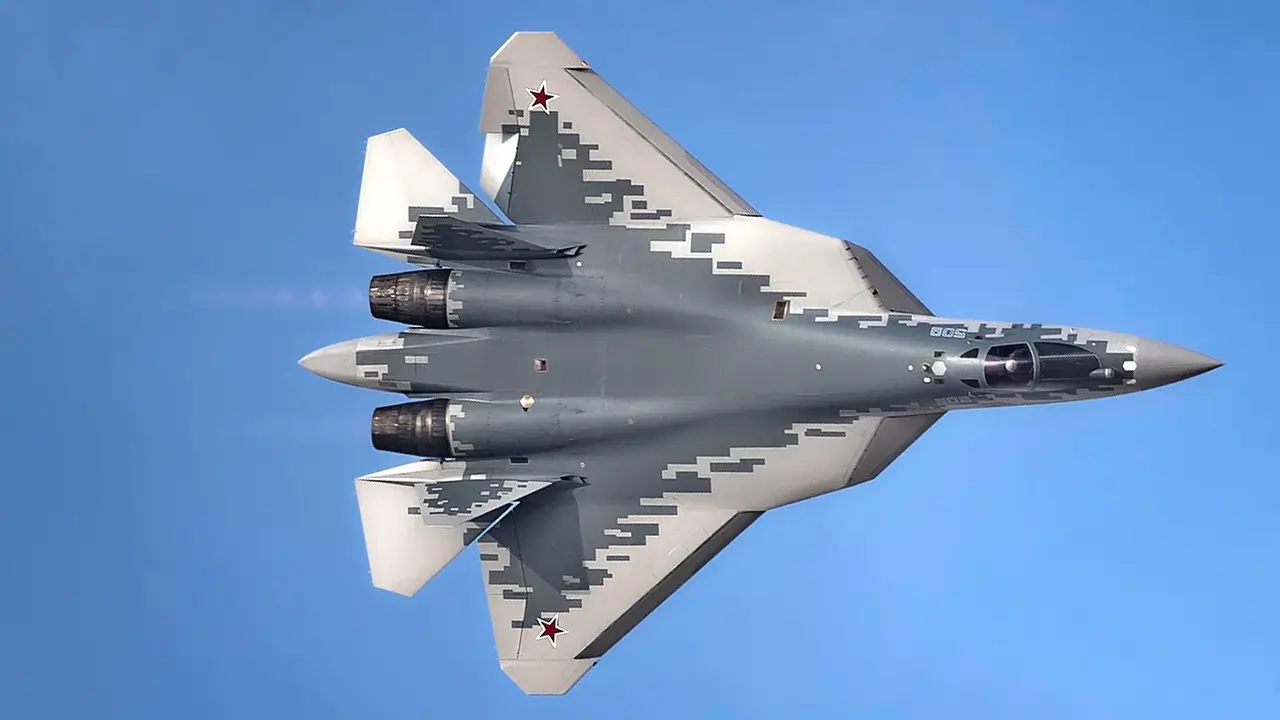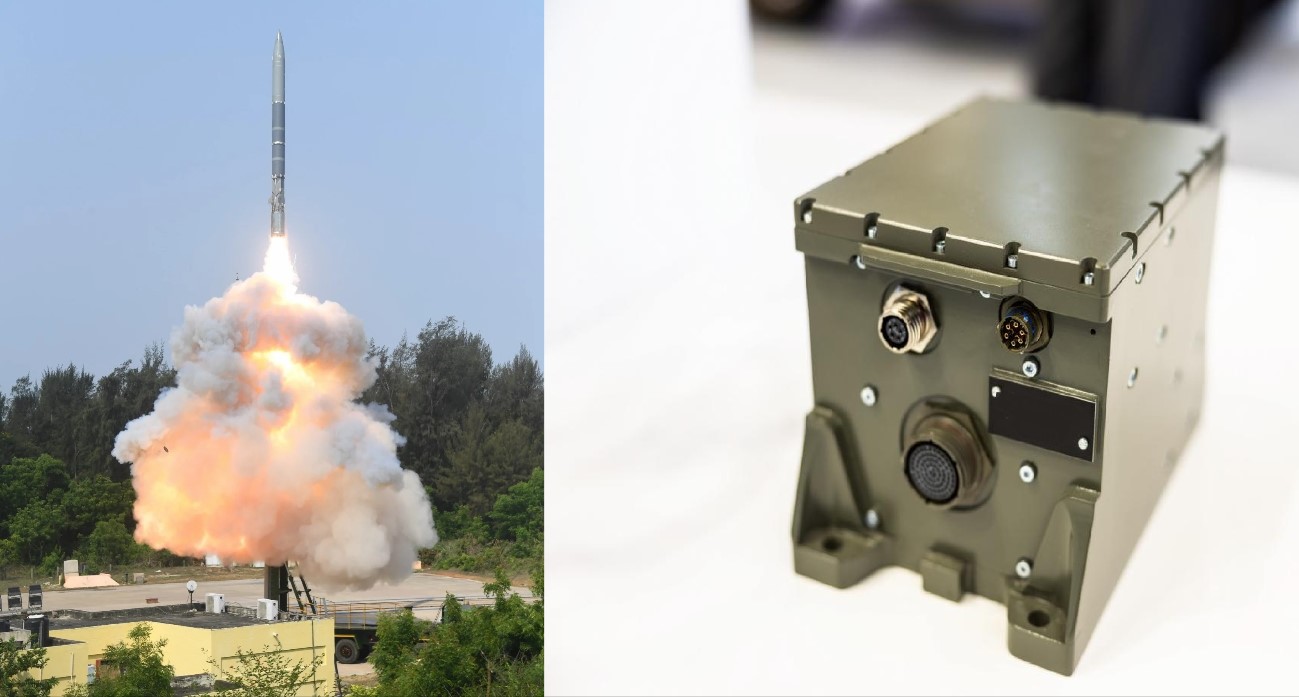World
COPENHAGEN : What began as a joke on social media has snowballed into one of the most talked-about political satire campaigns in Europe this year. More than 200,000 Danish citizens have now signed a viral petition proposing that Denmark buy the U.S. state of California, a tongue-in-cheek response to former U.S. President Donald Trump’s past interest in acquiring Greenland. The campaign, widely shared under the slogan “Måke Califørnia Great Ægain,” frames itself as a mirror held up to international headlines that stunned Denmark in 2019, when Trump publicly floated the idea of purchasing Greenland from Copenhagen. While the proposal is explicitly satirical, its creators have leaned into the joke with meticulous detail, polished branding, and a mock seriousness that has resonated far beyond Denmark’s borders. A Petition Built on Nordic Humor The initiative emerged online in early January and quickly gained traction across Danish and international social media platforms. Styled as a grassroots civic effort, the petition invites Danes to imagine what they describe as a “historic real-estate opportunity” for the Nordic nation: the purchase of California from the United States. Organizers say the campaign is not meant as an insult to Americans or Californians, but as a satirical commentary on how casually sovereign territory was discussed in the Greenland debate. “If countries can be talked about like property listings,” the petition argues, “then surely Denmark is allowed to browse.” The tone is unmistakably playful, blending political critique with self-deprecating Scandinavian humor, a style that has helped the campaign go viral. What Denmark ‘Offers’ California Under the fictional proposal, Californians would be welcomed into the Kingdom of Denmark with a package of benefits that reads like a parody of Nordic governance. The petition promises “rule of law, universal health care, and fact-based politics” as immediate perks of Danish administration. To underscore the absurdity, the organizers also pledge a lifetime supply of Danish pastries for all 39 million residents of the state. The petition’s website jokingly notes that while Denmark cannot solve every problem, “we are very confident about pastries.” The offer, though clearly unserious, taps into global stereotypes about Scandinavian welfare systems and political culture, contrasting them with the polarized debates that often surround California in U.S. national politics. Reimagining the Golden State The satirical plan goes further, outlining a full cultural “Denmarkification” of the West Coast. Los Angeles would be rechristened “Løs Ångeles,” while Danish-style cycling infrastructure would spread across cities more famous for traffic jams than bicycles. Even California’s most iconic institutions are not spared. Disneyland would be rebranded as “Hans Christian Andersenland,” a nod to Denmark’s most famous storyteller, Hans Christian Andersen. The petition cheerfully asks readers to imagine fairy tales replacing cartoon mascots, and even suggests that Viking helmets might become standard park attire. Negotiators, Crowdfunding, and a Trillion-Dollar Joke Acknowledging the hypothetical complexity of such a deal, the campaign claims it would dispatch Denmark’s “best negotiators” to Washington. The suggested delegation includes executives from LEGO and actors from Borgen, Denmark’s acclaimed political television series. Financing the purchase would come through crowdfunding, with a stated target of $1 trillion. The figure, organizers admit, is a rough estimate, accompanied by a disclaimer that Denmark is willing to “give or take a few billion.” The exaggerated sum is part of the joke, underscoring the gulf between real geopolitics and internet satire. Roots in a Real Diplomatic Dispute Behind the humor lies genuine diplomatic history. Trump’s comments about buying Greenland were met with sharp resistance in Denmark, where Prime Minister Mette Frederiksen famously dismissed the idea as “absurd,” stressing that Greenland is not for sale and that its future belongs to its people. Those remarks were widely supported across Denmark and Greenland, but they also sparked disbelief that territorial sovereignty could be discussed so casually by a major world leader. The California petition positions itself as a response to that disbelief, using satire to highlight what many Danes saw as a troubling precedent. The petition even suggests that the fictional deal might appeal to Trump himself, citing his repeated criticisms of California’s governance and politics. If the former president is no fan of the state, the argument goes, perhaps he would be happy to let Denmark take it off America’s hands. A Joke With a Message A disclaimer at the bottom of the petition makes its intent clear: the proposal is “100 percent real — in our dreams.” Yet its popularity suggests the campaign has struck a nerve, not just in Denmark but internationally, as a creative protest against the commodification of nations and peoples. There has been no response from Washington, and none is expected. Still, for a brief moment, the idea of Denmark trading pastries and LEGOs for the world’s fifth-largest economy has captured global attention — a reminder that humor can sometimes say what diplomacy cannot.
Read More → Posted on 2026-01-19 14:23:23World
Europe : EuroTrophy, Europe’s central hub for the Trophy Active Protection System (APS), has signed a landmark €330 million agreement with KNDS Deutschland to equip the next generation of Leopard 2A8 main battle tanks destined for Lithuania, The Netherlands, the Czech Republic, and Croatia. The contract was formally announced on Monday in Frankfurt am Main, underscoring NATO’s accelerating push to harden its armored forces against modern battlefield threats along the alliance’s eastern front. Under the terms of the agreement, EuroTrophy will deliver complete Trophy APS units alongside a comprehensive package of spare parts, operator and maintainer training courses, simulator-supported instruction, and dedicated logistics equipment. The scope extends well beyond initial fielding, providing full through-life support designed to guarantee sustained operational readiness across all four national fleets over decades of service. Trophy APS Standardized Across Leopard 2A8 Configuration The contract cements Trophy APS as a standard, factory-integrated component of the Leopard 2A8 configuration, ensuring full interoperability and technical commonality among participating nations. Defense officials familiar with the program say this standardization will simplify multinational deployments, enable shared sustainment and training pipelines, and reduce long-term lifecycle costs at a time when NATO planners are prioritizing collective defense and rapid force integration. By embedding Trophy at the platform level rather than as a national add-on, KNDS Deutschland and EuroTrophy have aligned the Leopard 2A8 with NATO’s broader doctrine of interoperable heavy forces, allowing armored units from different countries to operate side by side with identical protection architectures. NATO’s Active Protection System of Choice With this deal, Trophy further consolidates its position as the de facto NATO Active Protection System of choice. Designed to detect, track, and intercept incoming anti-tank guided missiles (ATGMs), rocket-propelled grenades (RPGs), and other battlefield threats before impact, the system is widely regarded as one of the most mature and combat-proven APS solutions currently in service. Trophy has already been integrated on major Western main battle tanks, including the Leopard 2 family, the U.S. Abrams M1, and Israel’s Merkava IV, as well as on lighter and medium-weight platforms such as Boxer, Patria AMV, and the Namer armored personnel carrier. Its expanding footprint across NATO inventories reflects the growing recognition that passive armor alone is no longer sufficient against modern precision-guided munitions and top-attack weapons. Strategic Context: Reinforcing the Eastern Front The timing of the announcement is strategically significant. Lithuania, the Czech Republic, and Croatia are all modernizing their armored forces as part of wider NATO reinforcement efforts along the eastern flank, while The Netherlands is reconstituting heavy armor capabilities in close cooperation with German-led formations. Military analysts note that the adoption of a common active protection system enhances not only survivability but also strategic signaling, demonstrating NATO’s intent to deploy survivable, networked armored units in high-threat environments. By combining advanced sensors, real-time threat processing, and hard-kill countermeasures, Trophy APS is specifically tailored for dense, contested battlespaces where tanks face simultaneous threats from multiple directions. EuroTrophy’s Role in Europe’s Defense Ecosystem Based in Germany, EuroTrophy operates as the European integration, support, and sustainment center for the Trophy system, originally developed by Rafael Advanced Defense Systems. The company provides a European-made, NATO-fielded solution, combining local industrial participation with combat-proven technology. Beyond hardware delivery, EuroTrophy offers vehicle integration engineering, maintenance and upgrade services, and full lifecycle support tailored to European armed forces. Industry sources say this approach was a decisive factor in the Leopard 2A8 selection, allowing customer nations to retain sovereign support capabilities while benefiting from a system with extensive operational experience. Production and integration activities are expected to align with Leopard 2A8 delivery schedules for the four customer nations, with phased rollouts beginning later this decade. As NATO continues to adapt to rapidly evolving battlefield threats, the EuroTrophy–KNDS agreement marks a significant step toward a more resilient, interoperable, and survivable European armored force. For NATO’s heavy brigades, the message is clear: active protection is no longer optional, but a core requirement for survival on the modern battlefield.
Read More → Posted on 2026-01-19 14:00:45Space & Technology
HELSINKI : In a breakthrough that redefines how electricity can be delivered, scientists in Finland have successfully transmitted electric power through open air without using physical wires, demonstrating a new generation of contactless energy technologies based on sound, light and radio waves. Researchers from University of Helsinki and University of Oulu revealed that controlled electric transmission is possible by shaping the air itself, rather than relying on traditional copper cables. The findings, disclosed in January 2026 through university research briefings, position Finland at the forefront of experimental wireless energy systems. Sound Waves That Act Like Invisible Wires At the heart of the research is a concept scientists describe as an “acoustic wire.” Using high-intensity ultrasonic sound waves, researchers were able to manipulate air density in precise patterns, creating invisible channels through which electrical sparks could travel in a controlled manner. Unlike conventional wireless charging, which relies on short-range electromagnetic fields, the acoustic method actively guides electricity along a defined path. The ultrasonic beams compress and rarefy the air, forming a temporary conduit that directs tiny electrical discharges safely through open space. Scientists emphasized that the electricity is not freely floating or uncontrolled. Instead, it follows a sound-defined route, behaving much like a wire that exists only for a fraction of a second. While the energy levels remain modest, the experiment demonstrates unprecedented control over electrical movement without physical contact. Laser Power and “Electricity by Light” Parallel to the acoustic work, Finnish researchers and private-sector partners are advancing “power-by-light” systems that use lasers to deliver electricity to remote receivers. In these setups, high-powered laser beams transmit energy across distance, where specialized photovoltaic cells convert the light back into electrical current. This method offers a critical advantage: complete galvanic isolation. Because there is no physical electrical connection, laser-based power delivery can be used safely in high-risk environments, including nuclear facilities, high-voltage substations and hazardous industrial zones. Although efficiency is currently lower than wired systems, researchers say the technology is already viable for niche applications requiring extreme safety and reliability. Harvesting Power From the Air Itself The third pillar of Finland’s research focuses on radio-frequency energy harvesting. Instead of transmitting new power, these systems collect microwatts of energy already present in the environment from radio, cellular and Wi-Fi signals. By combining ultra-efficient antennas and advanced power-management circuits, researchers have shown that ambient radio waves can power low-energy devices such as environmental sensors, industrial monitors and smart infrastructure components. The approach could significantly reduce dependence on disposable batteries, particularly across large Internet-of-Things networks. Scientists describe the concept as “Wi-Fi for power,” where electricity is gathered continuously rather than delivered in bursts. Not Science Fiction, but Precision Physics Researchers are careful to clarify that the experiments do not violate the laws of physics. The systems do not provide unlimited electricity at any distance, nor do they replace the power grid. Instead, the breakthrough lies in precision control. Ultrasonic waves guide electric fields, lasers convert light into usable current, and radio systems recycle existing energy. Together, they demonstrate that electricity can be shaped, directed and delivered through air in ways previously considered impractical outside the laboratory. A Step Toward Cable-Free Infrastructure While still experimental, the implications are far-reaching. Future applications could include plug-free electronics, self-powered industrial sensors, contactless connectors in robotics, and safer power delivery in extreme environments. By combining sound, light and radio technologies into a single research framework, Finland has emerged as one of the first countries to demonstrate multiple working methods of air-based electricity transmission at once. Scientists involved in the project say the work does not signal the end of wires, but it does mark the beginning of a more flexible, cable-free layer of electrical infrastructure — one where power moves safely through air, guided by physics rather than copper.
Read More → Posted on 2026-01-19 13:35:07India
NEW DELHI : A Russian technical team assessing the feasibility of manufacturing the fifth-generation Su-57 stealth fighter in India is expected to submit a detailed cost report to Hindustan Aeronautics Limited (HAL) later this month, potentially reviving a long-dormant plan for Indo-Russian collaboration on advanced combat aircraft, The Indian Express has learnt. According to defence sources familiar with the discussions, the report will present a comprehensive estimate of investments HAL would need to undertake if India and Russia decide to move forward with domestic production of the Russian fifth-generation jet. The assessment covers advanced stealth technologies, skilled manpower requirements, production tooling, testing infrastructure, and the creation of an indigenous supply chain capable of supporting sustained manufacture and lifecycle maintenance. Russian Assessment Finds HAL “Half Ready” The Russian team, which includes representatives from the Sukhoi Design Bureau and other defence entities, had already shared an initial technical assessment with HAL around two months ago. That report concluded that HAL already possesses nearly 50 per cent of the infrastructure required to manufacture a fifth-generation fighter aircraft in India. This readiness stems from more than two decades of licensed production of the Su-30MKI, following an inter-governmental agreement signed in December 2000. Under that programme, HAL established a nationwide production ecosystem that remains central to the Indian Air Force’s combat fleet. HAL’s Nashik division hosts the final assembly line for the Su-30MKI, while its Koraput facility undertakes licensed manufacture and overhaul of AL-31FP turbofan engines. Avionics and mission systems support is provided by HAL’s Strategic Electronics Factory in Kasaragod, Kerala. Defence planners believe much of this industrial base could be adapted for the Su-57 with targeted upgrades. Fifth-Generation Gap Looms for IAF The renewed focus on fifth-generation options comes amid growing concern within the Indian Air Force (IAF) over a capability gap expected to last eight to ten years. India’s indigenous fifth-generation programme, the Advanced Medium Combat Aircraft (AMCA), is not expected to enter service until the next decade. At a recent defence event, Air Marshal Ashutosh Dixit, Chief of Integrated Defence Staff (CISC), acknowledged the looming gap and said multiple options were under evaluation to maintain fighter squadron strength. “We are thinking right now how that gap can be filled. There are various options. We are still working that out,” he said, adding that fifth-generation capability remains under active deliberation. Su-57E vs F-35: A Strategic Choice If India opts for a limited stopgap induction of foreign fifth-generation fighters, the choice has narrowed to two aircraft: the Russian Su-57E and the American F-35 Lightning II. Both platforms were showcased at Aero India 2025 in Bengaluru, underscoring India’s strategic importance to global defence manufacturers. However, defence analysts suggest that strategic autonomy considerations could tilt New Delhi toward the Russian option. Analysts point to longstanding Indian concerns over end-use restrictions, software locks, and limits on weapons integration associated with U.S. platforms. By contrast, Russia has indicated a willingness to provide India with broader access to source codes, mission systems, and weapons integration on the Su-57, aligning with India’s emphasis on operational sovereignty. In October last year, Russian Ambassador Denis Alipov publicly stated that Moscow was prepared to support India’s AMCA programme through local production of the Su-57 and associated technologies. While there has been no official confirmation that the proposal was discussed during Russian President Vladimir Putin’s visit to India in December 2025, the submission of the cost report suggests the idea remains under serious consideration. Industry-Led Exercise, No Final Decision Yet Officials emphasise that the current exercise is being driven by HAL to assess its own capacity and investment exposure, rather than as a signal of imminent procurement. The government has not yet taken a policy decision on acquiring any foreign fifth-generation fighter, and any such move would require high-level political approval and inter-governmental negotiations. Still, with squadron numbers under pressure and the AMCA timeline stretching into the 2030s, the Su-57 manufacturing study marks a significant step in India’s search for a credible fifth-generation bridge — one that could also deepen its long-standing aerospace partnership with Russia while strengthening domestic defence manufacturing.
Read More → Posted on 2026-01-19 13:08:39World
TOKYO : Japan’s national auditor has disclosed that military equipment worth roughly 1.1 trillion yen (about $6.9 billion) purchased from the United States has remained undelivered for years, exposing structural weaknesses in one of Tokyo’s most important defense procurement channels and raising fresh concerns about operational readiness across the Japan Self-Defense Forces. In an audit report submitted to parliament in January 2026, the Board of Audit of Japan revealed that weapons systems, support equipment, and maintenance assets acquired under the U.S. Foreign Military Sales (FMS) framework had failed to arrive despite more than five years having passed since contracts were signed. The investigation was conducted at the formal request of the House of Councillors and reviewed procurement cases dating back to fiscal year 2018. Long-Delayed Deliveries Across 118 Contracts According to the audit, 118 FMS procurement cases remained incomplete well beyond their planned delivery windows. In many instances, equipment that was expected within a few years had still not been shipped, forcing Japan’s ground, maritime, and air units to rely on aging systems or interim substitutes. The Board concluded that the majority of delays stemmed from bottlenecks at U.S. manufacturers, including production backlogs and shifting priorities tied to American defense requirements. Because FMS contracts are administered by the U.S. government, rather than directly between Japan and defense companies, Tokyo has limited visibility into manufacturing schedules and limited ability to press suppliers for faster delivery. Impact on Air Defense Capabilities One of the most serious cases identified in the report involved maintenance and support equipment for the E-2D Advanced Hawkeye, a key airborne early warning platform operated by the Japan Air Self-Defense Force. The audit found that tools and systems required to properly service the aircraft were not delivered within the original contract period and remained outstanding years later. The E-2D fleet plays a central role in monitoring Japan’s airspace and coordinating air defense operations. The lack of dedicated maintenance equipment, the report warned, risked reducing aircraft availability and increasing strain on personnel tasked with keeping the fleet operational. Contracts With Limited Enforcement Power The Board of Audit emphasized that delivery schedules listed in FMS agreements are estimates rather than legally binding commitments. Under the program’s rules, the U.S. government retains the authority to adjust timelines through administrative procedures, often without requiring formal approval from the purchasing country. Japan, having already made advance payments, has little leverage to compel adherence to original schedules. In several cases examined by auditors, delivery dates were repeatedly revised unilaterally by the U.S. side. Some contracts remained financially unsettled for years, with funds fully paid but equipment neither delivered nor formally canceled. Financial Exposure and Operational Risk The report highlighted that Japan had already paid the full contract value for most delayed items, as FMS requires upfront payment before production and delivery are completed. This created what the Board described as long-term financial exposure, tying up defense funds while offering no immediate operational benefit. Operational risks were also flagged. Units across the Self-Defense Forces were compelled to extend the service life of older platforms, increasing maintenance costs and reducing efficiency. Auditors warned that prolonged reliance on outdated systems could erode readiness at a time when Japan faces a rapidly deteriorating regional security environment. Structural Limits of the FMS System The audit devoted significant attention to structural issues inherent in the FMS framework. Because contracts are signed between the U.S. government and American defense companies, Japan is not a direct contractual party and cannot negotiate directly with manufacturers. This arrangement limits transparency over production delays, cost breakdowns, and the prioritization of orders when U.S. domestic or allied demands surge. While the Japanese Ministry of Defense repeatedly raised concerns with U.S. authorities, the Board found that these efforts produced only limited improvements in delivery timelines. Government Response and Recommendations The Ministry of Defense acknowledged the findings and stated that it would continue discussions with Washington to improve schedule management and information sharing. The Board of Audit urged the ministry to strengthen internal oversight of FMS contracts, enhance tracking of delayed items, and more carefully assess procurement risks before committing large sums of public funds. The audit also recommended that Japan reconsider whether FMS is always the most appropriate procurement route, particularly for support equipment and spare parts that directly affect day-to-day operational availability. Broader Implications for Japan’s Defense Strategy The findings come as Japan deepens its reliance on U.S.-made systems, including advanced aircraft, missile defenses, and command-and-control assets. The Board warned that continued delivery delays could have cumulative effects across multiple domains, undermining deterrence and readiness if not addressed. The FMS program remains a cornerstone of U.S. arms exports, promoted as a means to ensure interoperability and security among allies. However, the Japanese audit underscores how the system can leave purchasing nations exposed when production capacity is strained or when American priorities shift, turning estimated delivery schedules into years-long uncertainties.
Read More → Posted on 2026-01-18 17:34:11Space & Technology
MOSCOW / WASHINGTON : After more than a quarter-century circling the Earth as the most ambitious joint project in human spaceflight, the International Space Station (ISS) is entering its final, irreversible phase. Russian and American space officials are preparing for a decisive series of negotiations that will determine not whether the ISS will be destroyed, but precisely how and when the 450-ton orbital laboratory will be brought down safely before the end of the decade. The confirmation came this week from Roscosmos Director General Dmitry Bakanov, who said that while the station’s operational life has been formally extended, the emphasis has now shifted from utilization to controlled disposal. The talks, expected to intensify this year, mark the beginning of what both sides privately describe as the most complex engineering challenge the ISS program has ever faced. From Extension to Exit Strategy Under current agreements, NASA plans to operate the ISS until 2030, while Russia has committed only through 2028. That two-year discrepancy has emerged as the central fault line in the negotiations, because the station’s ability to maintain altitude depends heavily on propulsion systems housed in the Russian segment. Bakanov said Roscosmos has already completed a draft technical program for deorbiting the ISS, estimating that the full sequence—from preparatory maneuvers to final reentry—would take roughly two and a half years. That timeline implies that irreversible steps must begin well before 2030, even if astronauts continue living aboard the station during its final operational phase. Engineers on both sides warn that delaying decisions could increase the risk of an uncontrolled descent. As the station ages, its orbit naturally decays due to atmospheric drag, forcing regular reboosts to prevent an unplanned reentry. How the ISS Will Be Brought Down The planned end of the ISS is not a single dramatic plunge, but a carefully staged process. Once the final crew departs, a dedicated vehicle will attach to the station and gradually lower its orbit. The final burn will send the structure into a steep trajectory toward Point Nemo, a remote region of the South Pacific often called the world’s “spacecraft cemetery,” where surviving debris is expected to fall harmlessly into the ocean. NASA has already moved ahead with its own solution. In 2025, the agency awarded a contract worth nearly $1 billion to SpaceX to develop the U.S. Deorbit Vehicle (USDV). The spacecraft is based on an enlarged Dragon design, fitted with dozens of Draco engines and carrying far more propellant than any previous Dragon mission. According to NASA officials, the USDV is intended to function as a powerful space tug, capable of steering the ISS through its final maneuvers even if Russian propulsion is unavailable late in the process. Russian officials, however, have continued to argue that any deorbit plan must be fully coordinated, given the deeply integrated nature of the station. The Russian Module Question One of the most contentious issues is the future of Russia’s newer ISS modules, particularly Nauka, which was launched in 2021 after years of delays. Roscosmos has proposed detaching these modules to serve as the foundation of a future Russian Orbital Station (ROS) once the ISS partnership ends. Recent internal technical assessments, however, have cast doubt on that plan. Engineers have warned that metal fatigue and weaknesses in older docking nodes could make separation risky, raising the possibility of structural damage to both the departing modules and the remaining station. The dilemma is stark: if Russia withdraws in 2028, the ISS loses its primary propulsion and attitude-control capabilities. If it stays until 2030, the modules themselves may be too degraded to reuse. The issue underscores how tightly coupled the station’s international architecture has become after decades of continuous modification and expansion. A Symbolic End to a Unique Partnership Since its first modules were launched in 1998, the International Space Station has been continuously inhabited since 2000, hosting astronauts from more than a dozen countries and supporting tens of thousands of scientific experiments. It survived the end of the Space Shuttle era, multiple geopolitical crises, and the near-total collapse of U.S.–Russian cooperation on Earth. Now, both partners are looking elsewhere. NASA is backing a mix of private commercial space stations in low Earth orbit while focusing government efforts on the Moon through the Gateway program. Russia is pursuing ROS as a sovereign successor, designed for higher-inclination orbits and potential civil-military dual use. For Bakanov, the moment is as much about responsibility as legacy. “The station has served its purpose,” he said. “Our task now is to ensure its final chapter is written safely, so that it does not become a threat to the planet it observed for nearly three decades.” As negotiations move forward, the fate of humanity’s most expensive and enduring orbital outpost now depends not on discovery or diplomacy, but on precision, timing, and an orderly end.
Read More → Posted on 2026-01-18 17:26:30World
SEOUL : South Korea has begun deploying its most powerful conventional ballistic missile, the Hyunmoo-5 — widely dubbed the “monster missile” — to frontline operational units, marking a decisive escalation in Seoul’s military deterrence posture against mounting nuclear and missile threats from North Korea. According to South Korean defence officials, the phased deployment process began in late 2025 and has now entered active frontline integration. The move represents the culmination of years of development aimed at countering Pyongyang’s deeply buried command centers, missile silos, and hardened underground facilities — assets long considered central to North Korea’s survivability in any conflict. A New Pillar of South Korea’s Deterrence Strategy The Hyunmoo-5 is the largest and most destructive conventional missile ever fielded by South Korea. Designed as a high-mass, bunker-busting ballistic missile, it forms a key component of Seoul’s evolving “three-axis” defense concept, which combines pre-emptive strike capabilities, missile defense, and massive retaliation options. Unlike earlier Hyunmoo variants, the Hyunmoo-5 is explicitly optimized for destroying deeply buried and reinforced targets. South Korean military planners have described it as a non-nuclear strategic weapon intended to neutralize leadership bunkers and underground weapons infrastructure without crossing the nuclear threshold. Unprecedented Size and Firepower Military analysts estimate the Hyunmoo-5 weighs roughly 36 tons, making it significantly heavier than most short- and medium-range ballistic missiles in service worldwide. Its payload capacity — reported to reach up to eight tons — allows it to carry an exceptionally large penetrator warhead capable of striking targets located tens of meters underground. The missile uses solid fuel and is launched from a road-mobile transporter-erector-launcher (TEL), enhancing survivability and operational flexibility in a conflict scenario. While precise performance figures remain classified, defence sources indicate the missile’s range can vary depending on payload configuration, prioritizing destructive power over maximum distance. From Parade Showcase to Operational Reality The Hyunmoo-5 was first publicly unveiled during South Korea’s Armed Forces Day parade in October 2024, where it immediately drew international attention due to its sheer size and explicit bunker-buster role. At the time, officials confirmed that development and testing had been completed and that mass production was imminent. By 2025, South Korea’s defence ministry announced that production lines were active and that the missile would be inducted into operational units before the end of the year. The current deployment confirms that the system has now moved beyond symbolic display and into active military planning. Message to Pyongyang and the Region South Korean officials have framed the deployment as a defensive necessity in response to North Korea’s expanding nuclear arsenal, solid-fuel intercontinental ballistic missiles, and an increasingly sophisticated underground basing network. In recent years, Pyongyang has emphasized its ability to conduct nuclear strikes from concealed and hardened positions, complicating deterrence and pre-emptive strike calculations. By fielding the Hyunmoo-5, Seoul aims to signal that even the most fortified underground facilities are no longer invulnerable. The missile’s introduction is intended to strengthen deterrence by raising the potential cost of aggression to an unacceptable level. Strategic Risks and Escalation Concerns While the deployment strengthens South Korea’s conventional strike capability, it also introduces new escalation dynamics. North Korea has repeatedly condemned South Korean missile developments as provocative and has historically responded to similar moves with weapons tests and aggressive rhetoric. Regional analysts warn that the operational deployment of such a high-destructive-power missile could further intensify the arms competition on the Korean Peninsula, particularly if Pyongyang accelerates its own missile programs or bunker-hardening efforts in response. Looking Ahead South Korea is expected to continue expanding its Hyunmoo-5 inventory over the coming years while integrating the missile into joint operational planning with allied forces. Defence officials emphasize that the weapon is intended as a deterrent of last resort — but its deployment underscores how sharply security conditions on the peninsula have deteriorated. As tensions remain high and diplomatic channels with North Korea largely frozen, the arrival of the Hyunmoo-5 on frontline units signals a new and more muscular phase in South Korea’s approach to national defense — one built on the ability to strike deeper, harder, and with unprecedented conventional force.
Read More → Posted on 2026-01-18 17:22:14World
WASHINGTON / DAMASCUS : The United States military has killed a senior Al-Qaeda–affiliated militant in northwest Syria who U.S. officials say had direct operational links to the ISIS attack that killed two American soldiers and an interpreter last month, marking a significant escalation in Washington’s campaign against militant networks targeting U.S. forces in the region. According to a statement released by U.S. Central Command (CENTCOM), American forces carried out a precision strike on January 16 that killed Bilal Hasan al-Jasim, an experienced extremist leader described as a key facilitator tied to the ISIS operative responsible for the December 13 ambush near Palmyra. CENTCOM said al-Jasim maintained direct connections with the ISIS gunman who carried out the attack and had played an active role in plotting and enabling terrorist operations against U.S. and coalition personnel operating in Syria. Deadly December Ambush in Central Syria The strike follows the December 13 attack near Palmyra, where ISIS fighters ambushed U.S. and partner forces operating in eastern Syria. The assault killed two American service members and an American military interpreter, while also injuring both U.S. and Syrian personnel. The fallen soldiers were later identified as Sgt. Edgar Brian Torres Tovar, 25, of Des Moines, Iowa, and Sgt. William Nathaniel Howard, 29, of Marshalltown, Iowa. Both were members of the Iowa National Guard deployed to the region as part of the U.S.-led mission against ISIS. U.S. officials said the attack represented one of the deadliest assaults on American forces in Syria in recent years and underscored the continuing threat posed by ISIS remnants and allied extremist networks. CENTCOM: “There Is No Safe Haven” Announcing the January 16 strike, CENTCOM Commander Brad Cooper said the killing of al-Jasim sent a clear message to militant groups operating in Syria and beyond. “The death of a terrorist operative linked to the deaths of three Americans demonstrates our resolve in pursuing terrorists who attack our forces,” Cooper said. “There is no safe place for those who conduct, plot, or inspire attacks on American citizens and our warfighters. We will find you.” CENTCOM did not disclose the exact location of the strike in northwest Syria or whether partner forces were involved, citing operational security. Operation Hawkeye Strike Expands Campaign The January 16 operation was conducted as part of Operation Hawkeye Strike, a large-scale U.S. military response launched in the aftermath of the December ambush. CENTCOM said Operation Hawkeye Strike began on December 19, 2025, at the direction of Donald Trump, and has involved widespread air and ground operations across Syria aimed at dismantling ISIS’s remaining infrastructure. According to U.S. military figures, American and partner forces have struck more than 100 ISIS weapons depots, command nodes, and logistical sites during the operation, employing over 200 precision-guided munitions. The campaign has focused on disrupting ISIS’s ability to plan, resource, and execute attacks against coalition forces. Sustained Pressure on ISIS Networks CENTCOM said the latest strike reflects a broader, sustained effort to degrade ISIS and affiliated extremist groups operating in Syria’s ungoverned and contested areas. Over the past year, U.S. and partner forces have captured more than 300 ISIS operatives and killed over 20 others across the country, removing individuals assessed as posing direct threats to U.S. personnel and regional stability. “These strikes target ISIS throughout Syria as part of our ongoing commitment to root out Islamic terrorism against our warfighters, prevent future attacks, and protect American and partner forces in the region,” CENTCOM said in its statement, adding that U.S. and coalition forces “remain resolute in pursuing terrorists who seek to harm the United States.” U.S. Mission Continues in Syria The soldiers killed in December were serving as part of roughly 1,800 U.S. troops deployed across the Middle East earlier this year under Operation Inherent Resolve, the multinational campaign launched to defeat ISIS and prevent its resurgence. While ISIS no longer controls large swathes of territory, U.S. officials have repeatedly warned that the group retains the capability to conduct deadly insurgent-style attacks, particularly in remote desert regions and along key transit routes in central and eastern Syria. The killing of Bilal Hasan al-Jasim, U.S. officials say, is intended not only as retribution for the December ambush but also as a deterrent, signaling that those who enable or inspire attacks on American forces will be relentlessly pursued.
Read More → Posted on 2026-01-18 17:16:28India
NEW DELHI : In a major step toward autonomous naval warfare and indigenous defence innovation, the Indian Navy has operationalised a domestically developed software system that enables fully unmanned surface combat operations at sea. The system, known as Advanced Autonomous Navigation & Control Software (A2NCS), has been jointly developed by the Navy’s Weapons and Electrical Engineering Systems Establishment (WESEE) in collaboration with Bharat Electronics Limited, officials confirmed this week. The software marks a significant technological milestone, allowing Unmanned Surface Vessels (USVs) to navigate, manoeuvre and execute missions in complex maritime environments without human presence onboard. According to a statement shared by Bharat Electronics on the social media platform X, A2NCS has already been successfully integrated into an operational Fast Interceptor Boat of the Indian Navy, which has since been deployed for mine countermeasure operations and live combat exercises. A New Layer of Naval Autonomy At its core, A2NCS is designed to transform conventional naval craft into intelligent, self-governing platforms. The software enables three graduated modes of operation, giving commanders flexibility depending on mission requirements and threat levels. In remote-controlled mode, an operator located at a shore-based or shipborne control station can assume command of the vessel to conduct precision manoeuvres. In autonomous waypoint navigation mode, the craft independently patrols a designated maritime area, dynamically adjusting its course in response to traffic density, obstacles and sea conditions. In its most advanced configuration, the fully autonomous mode, the vessel operates entirely on its own, navigating congested sea lanes and executing assigned missions without any external input. Naval sources say this layered autonomy is critical for real-world deployments, particularly in contested waters where communications may be degraded or denied. Sensor Fusion and Artificial Intelligence at Sea A2NCS relies on a sophisticated network of onboard sensors to maintain situational awareness during unmanned missions. These include radar systems for surface detection, Automatic Identification System (AIS) receivers for tracking commercial and naval traffic, electro-optical and infrared (EO/IR) sensors for day-and-night surveillance, and integrated navigation inputs from Inertial Navigation Systems (INS) and GPS. Electronic navigation charts further enhance real-time decision-making. By fusing data from these sources, the software generates an AI-driven operational picture that allows the vessel to identify hazards, avoid collisions, comply with international maritime rules, and adapt to changing environmental conditions. Officials involved in the programme emphasised that obstacle avoidance, cyber resilience and built-in fail-safe mechanisms were treated as core design requirements, reflecting lessons drawn from global USV deployments. Certified for Safety and Reliability In a first for an indigenous Indian unmanned maritime system, A2NCS has received formal certification from the Indian Register of Shipping. The IRClass certification followed extensive sea trials of the autonomous Fast Interceptor Boat, during which the system was evaluated for quality, reliability and safety. Compliance with International Regulations for Preventing Collisions at Sea (COLREGs)—a critical benchmark for autonomous vessels operating in shared sea spaces—was a central requirement during testing, officials said. The certification significantly strengthens the Navy’s confidence in deploying the software across a wider range of platforms and missions. Strategic and Industrial Significance The operational deployment of an A2NCS-powered vessel underscores India’s accelerating push into unmanned and AI-enabled naval capabilities, an area increasingly central to modern maritime security. USVs are viewed as force multipliers, capable of performing high-risk tasks such as mine detection, harbour defence, surveillance and electronic warfare, while reducing danger to human crews. From an industrial perspective, the project aligns closely with the government’s “Atma Nirbhar Bharat” vision, aimed at reducing dependence on foreign defence technologies. Bharat Electronics, a key public sector defence electronics manufacturer, has described the programme as a model for deep collaboration between the armed forces and domestic industry. With the Fast Interceptor Boat already proving the concept during operational deployments, defence planners expect A2NCS to be adapted for additional vessel classes in the future—potentially positioning India among a small group of nations with certified, indigenously developed autonomous naval navigation software.
Read More → Posted on 2026-01-18 17:08:56World
COPENHAGEN / WASHINGTON : A newly disclosed intelligence controversy has sent shockwaves through Denmark’s political and security establishment after a Danish newspaper reported that the United States quietly sought highly sensitive technical data on Greenland’s critical infrastructure without notifying Copenhagen, raising fears of contingency planning for unilateral military action on the strategically vital Arctic island. The report, published Sunday by Berlingske, cites classified documents and multiple defense sources describing U.S. requests for detailed information on ports, airfields, and energy systems across Greenland—assets considered “dual-use” because of their civilian and military importance. Danish officials told the paper the approach bypassed normal diplomatic and alliance channels, triggering an internal alarm within hours of its discovery. Quiet Requests, Sensitive Targets According to Berlingske, American representatives did not submit their inquiries through Denmark’s Ministry of Foreign Affairs, the standard route for allied military coordination. Instead, the requests were allegedly directed toward local municipal authorities in Greenland and select elements within Denmark’s Arctic Command, fragmenting oversight and delaying political scrutiny. The data sought was unusually granular. Officials familiar with the documents said it included deep-water port depth measurements, runway stress tolerances at civilian airports, and detailed assessments of power generation and grid resilience in northern settlements. Such information, Danish analysts warned, goes well beyond routine mapping updates or joint NATO exercises. Why the Details Matter Defense planners interviewed by the newspaper said the combination of port, runway, and power-grid data mirrors the requirements for Operational Plan (OPLAN) logistics—the technical backbone needed to rapidly deploy heavy transport aircraft, armored units, and sustainment forces. One Danish defense source, speaking on condition of anonymity, told Berlingske that runway load limits are requested “when you are preparing to land the heaviest aircraft with armored payloads,” not for scientific cooperation or disaster-response planning. The source said the pattern of requests suggested feasibility studies for rapid force insertion rather than alliance transparency. Intelligence Services Raise the Alarm The inquiries were reportedly flagged by the Danish Defense Intelligence Service, which briefed the prime minister’s office after concluding the requests carried “coercive-use indicators.” Internal assessments, as described by Berlingske, warned that the United States appeared to be examining scenarios for a “forced entry” operation if political efforts to acquire Greenland were to fail. Greenland, an autonomous territory within the Kingdom of Denmark, has long been viewed in Washington as a linchpin of Arctic security due to its geographic position between North America and Europe and its proximity to Russian polar routes. The U.S. already operates a major installation at Pituffik Space Base, formerly Thule Air Base, under long-standing bilateral agreements. Trade Pressure and Military Optics The revelations landed amid heightened transatlantic tension. Over the weekend, U.S. President Donald Trump publicly threatened new tariffs on several European countries, including Denmark, after renewed U.S. rhetoric about Greenland’s strategic value. While Washington did not explicitly link the infrastructure inquiries to trade pressure, Danish officials privately described the timing as “deeply unsettling.” Adding to the unease, allied troop rotations in Greenland’s capital, Nuuk, concluded this week under pre-scheduled timelines. Danish politicians across party lines said the optics left Denmark appearing isolated at a moment of acute diplomatic strain. Political Fallout in Copenhagen The Berlingske report ignited an immediate debate in the Folketing, where opposition leaders demanded to know why the government had not disclosed the American approaches sooner. Several lawmakers characterized the outreach as a breach of sovereignty and called for a formal explanation from Washington. Government officials declined to comment on classified intelligence but acknowledged “serious concerns” about the manner and scope of the requests. Denmark’s defense ministry said it is reviewing procedures governing allied access to infrastructure data and considering tighter controls on information shared at the municipal level in Greenland. Washington’s Silence, NATO’s Dilemma U.S. officials have not publicly responded to the specific allegations. In private, diplomats have historically framed American interest in Greenland as defensive and alliance-based, pointing to the island’s role in missile warning and space surveillance. NATO officials contacted by Danish media emphasized that alliance cooperation depends on transparency and consent among members, though they stopped short of addressing the findings directly. For Denmark, the episode underscores a growing strategic dilemma: how to balance alliance obligations with sovereignty over a territory that has become central to great-power competition in the Arctic. As ice retreat accelerates shipping access and resource exploration, Greenland’s strategic value—and the scrutiny surrounding it—shows no sign of diminishing. As one senior Danish lawmaker put it in remarks reported by Berlingske, “We believed we were managing a diplomatic negotiation. The documents suggest someone else may have been preparing an operational survey. That difference changes everything.”
Read More → Posted on 2026-01-18 16:23:32World
MOSCOW : A newly compiled technical assessment of Russia’s Oreshnik ballistic missile, conducted in the aftermath of the January 8 strike on Lviv, is reshaping Western and regional understanding of the weapon’s true purpose. Far from being a precision, independently targeted missile system, analysts now describe Oreshnik as a high-speed, area-effect strike weapon optimized for durability, rapid deployment, and kinetic impact rather than accuracy. The assessment, drawing on debris analysis, flight telemetry, and observed impact patterns from strikes on Dnipro and Lviv, concludes that the missile dispenses with complex post-boost targeting architecture typical of modern intercontinental ballistic missiles (ICBMs). Instead, it employs a simplified separation system designed to release multiple unguided warheads almost simultaneously over a compact target zone. A Design That Breaks with MIRV Orthodoxy For weeks after Oreshnik’s combat debut, Western analysts speculated that the system was equipped with a classic MIRV “bus,” or Individual Disengagement Pod, known in Russian terminology as the Blok Individualnogo Razvedeniya (BIR). Such systems, common on strategic ICBMs, use liquid-fueled engines and precision guidance to maneuver in space and deploy warheads toward widely separated targets. The new analysis challenges that assumption outright. According to findings attributed to Dmitry Kornev of MilitaryRussia.Ru, Oreshnik lacks any conventional BIR. Instead of a maneuverable post-boost vehicle, the missile’s upper section is built around a sealed instrument compartment and a gas-dynamic release mechanism, signaling a fundamentally different design philosophy. The Role of the GRSO System Central to this revised understanding is the missile’s reported use of a Gas-Reactive Stabilization and Orientation (GRSO) system. Rather than plotting individual trajectories for each warhead, the GRSO uses short-duration gas thrusters to orient the payload section after burnout and then rapidly disperse its contents. Once released, the warheads are unguided. They follow purely ballistic paths, striking the target area within seconds of one another. This behavior closely matches video evidence and seismic data from recent strikes, which showed dense clusters of impacts rather than the staggered, widely spaced strikes characteristic of MIRV-equipped systems. Analysts describe the effect as a “kinetic shotgun,” a configuration designed to overwhelm defenses and saturate a specific zone with extreme velocity rather than to destroy discrete, hardened targets with precision. MIT’s Engineering Fingerprint The presence of a sealed instrument compartment is widely viewed as a hallmark of the Moscow Institute of Thermal Technology (MIT), the organization behind Russia’s most prominent solid-fuel missiles, including Topol-M, Yars, and Bulava. In MIT designs, guidance electronics are integrated directly into the missile’s upper stage within a sealed housing, increasing resistance to environmental stress and simplifying long-term storage and field maintenance. This feature strongly supports the conclusion that Oreshnik is a derivative of the RS-26 Rubezh, adapted not for strategic nuclear deterrence but for high-readiness theater warfare. By stripping away the mass and complexity of a liquid-fueled post-boost vehicle, designers appear to have prioritized robustness, speed, and rapid launch capability. Payload and Performance The assessment estimates that Oreshnik carries a single cassette containing six warheads. Total payload mass is believed to range from roughly 1,250 kilograms, consistent with Topol-M class systems, to as much as 3,000 kilograms in heavier configurations. In a six-warhead arrangement, each individual projectile, including its mounting hardware, may weigh up to 400 kilograms. When paired with the first and second stages typical of MIT-designed solid-fuel missiles, this payload allows for an operational range of approximately 4,100 kilometers. From Russian launch sites, that range places all of Europe within reach, underscoring the system’s role as a regional, rather than intercontinental, strike asset. Strategic Implications Defense experts argue that Oreshnik represents a deliberate shift away from costly, intricate MIRV technology toward a simpler and potentially cheaper alternative suited to conventional warfare. By eliminating the vulnerable post-boost “bus,” the missile may retain higher terminal velocity, increasing the kinetic energy of impact. The rapid dispersal enabled by the GRSO system also reduces the time window in which missile defenses can engage the payload during its exo-atmospheric phase. In practical terms, the system appears tailored for area targets such as energy infrastructure, logistics hubs, and air-defense clusters, rather than for surgical strikes against individual bunkers or silos. Oreshnik was first used operationally against Dnipro in November 2024 and again on January 8 in western Ukraine. The emerging technical picture suggests that Russia has fielded a specialized theater missile, derived from its strategic arsenal but reengineered as a rugged, high-speed delivery system for clustered, unguided warheads. As analysts continue to study debris and flight data, the missile is increasingly seen not as a precision instrument, but as a blunt-force tool designed to exploit speed, mass, and saturation in modern warfare.
Read More → Posted on 2026-01-18 15:49:52World
TEHRAN / BEIJING / WASHINGTON : Iran has reportedly taken delivery of advanced Chinese-made HQ-9B long-range air defense missile systems in what regional intelligence sources describe as an emergency effort to harden the country’s airspace against a potential American or Israeli strike. The alleged transfer, if confirmed, would mark one of the most consequential shifts in Iran’s military posture in more than a decade and signal a deepening strategic alignment between Iran and China. Multiple security and aviation-monitoring sources say the systems arrived via an unusually intense airlift that began in mid-January, with at least 14 large cargo aircraft landing in Iran within a span of roughly 72 hours. The sudden surge of flights from southern China has fueled speculation that Beijing used a compressed delivery timeline to rush complete air defense units into position before any Western military operation could be launched. A Sudden and Unprecedented Airlift According to flight-tracking data reviewed by regional analysts, the air bridge began around January 15, when a mix of Chinese heavy transport aircraft and Iranian-operated Boeing 747 freighters started arriving at Iranian airfields. Several of the Iranian planes are linked to Mahan Air, an airline long accused by Western governments of supporting Iran’s Islamic Revolutionary Guard Corps (IRGC) logistics network. The aircraft reportedly departed from logistics hubs in the Guangzhou and Shenzhen regions, flying westward through Central Asia. Analysts say many of the flights either disabled their transponders or deviated from standard civil aviation procedures, a tactic often used to obscure sensitive military cargo movements. By avoiding more closely monitored southern routes, the planes reduced the risk of surveillance or interception. By the end of the third day, at least 14 landings had been recorded. Defense specialists estimate that such a volume of traffic would be sufficient to deliver two to three complete HQ-9B battalions, along with reload missiles, command vehicles, and associated radar units. Why the HQ-9B Matters The HQ-9B is China’s most capable operational long-range surface-to-air missile system, often compared to Russia’s S-400. With a reported engagement range of up to 250 kilometers and the ability to intercept targets at altitudes approaching 50 kilometers, the system is designed to counter aircraft, cruise missiles, and some ballistic threats. Unlike earlier generations of Iranian air defenses, the HQ-9B employs active radar homing in the missile’s terminal phase. This allows launch radars to disengage or shift targets after firing, complicating suppression efforts by attacking aircraft. Sources familiar with the reported delivery say the package also includes advanced phased-array surveillance radars, most notably the JY-26 “Skywatch”, which Chinese engineers advertise as optimized for detecting low-observable (stealth) aircraft. If deployed and integrated successfully, the system would directly address one of Iran’s most serious vulnerabilities: its difficulty tracking and engaging modern Western fighters such as the U.S. F-35 and F-22. A Break with Moscow For years, Iran’s high-end air defense rested on Russian-supplied S-300PMU2 batteries. Those systems, however, were widely judged to have performed poorly during the intense air clashes with Israel in mid-2025, when Israeli aircraft reportedly penetrated Iranian-protected airspace with limited losses. The same period also saw delays and uncertainty surrounding Moscow’s promised delivery of Su-35 fighter jets to Tehran. Regional diplomats say frustration with Russia’s reliability, combined with China’s willingness to deliver quickly and quietly, pushed Iran toward Beijing. One official familiar with the matter described the move as “diversifying away from a single, unreliable supplier” at a moment of acute strategic pressure. “Oil for Iron” People briefed on the alleged deal say the transfer was facilitated through a barter arrangement rather than a conventional cash purchase. Under the reported terms, Iran would compensate China with heavily discounted crude oil shipments, bypassing dollar-denominated transactions and reducing exposure to U.S. financial sanctions. Such arrangements are not unprecedented. China has remained one of the largest buyers of Iranian oil despite international restrictions, often using opaque trading structures. Analysts say the urgency of the January airlift suggests the agreement was finalized late last year but executed only after intelligence assessments warned Tehran of a narrowing window before possible Western military action. Strategic Consequences The timing of the reported deliveries has drawn particular attention in Washington and Tel Aviv. U.S. forces have been reinforcing their regional posture in recent weeks, and defense planners are believed to be examining strike options against Iranian targets linked to missile development and proxy operations. Military analysts caution that the HQ-9B’s arrival does not make Iran immune to attack. Integrating a new air defense system, training crews, and linking it into existing command networks typically takes weeks or months. However, even a partially operational deployment could force U.S. or Israeli planners to allocate additional resources to suppress Iranian air defenses, raising the cost and complexity of any operation. “This is about buying time and raising the threshold,” said one defense analyst who follows Chinese missile exports. “If these batteries come online quickly, Iran shifts from being penetrable to being dangerous to penetrate.” A Test Yet to Come Despite its impressive specifications, the HQ-9B has never been tested in combat against Western air power. Any future confrontation would therefore serve as a proving ground not only for Iran’s defenses but also for China’s claims about the system’s effectiveness. For now, the reported airlift underscores how rapidly the strategic landscape around Iran is changing. Whether the HQ-9B ultimately reshapes the balance of power or merely delays an inevitable clash may depend on how quickly the systems are deployed—and how soon the skies over Iran are tested.
Read More → Posted on 2026-01-18 15:35:31World
Brussels / Paris : French President Emmanuel Macron has called on the European Union to prepare the activation of its most powerful trade defence tool after U.S. President Donald Trump threatened new tariffs against Europe in a dispute linked to Greenland. The warning has pushed transatlantic relations into a new and potentially volatile phase, raising the prospect of the EU taking unprecedented economic action against its closest ally. Speaking to European officials and diplomats, Macron argued that the EU must be ready to respond decisively if Washington follows through on its tariff threat. He specifically pointed to the bloc’s Anti-Coercion Instrument (ACI), a legal mechanism designed to counter economic pressure from third countries, describing it as a necessary deterrent in the face of what he called “unacceptable coercion.” A Rare Escalation with Washington The confrontation was triggered after President Trump warned that the United States could impose tariffs on European goods if its demands related to Greenland were not met. While details of the potential tariffs have not been officially published, European officials say the threat was broad enough to alarm several EU capitals and prompted urgent discussions in Brussels. For decades, trade disputes between the EU and the U.S. have been managed through negotiations or the World Trade Organization. Macron’s call marks a significant escalation, signalling that Europe may now be willing to use far more forceful instruments if it believes its sovereignty or economic interests are being leveraged through pressure. What the Anti-Coercion Instrument is The Anti-Coercion Instrument, adopted by the EU in 2023, was created to give Brussels a legal framework to respond when a foreign power uses trade or investment measures to force political concessions. Until now, it has never been used. Under the instrument, the European Commission can investigate whether coercion is taking place and, if dialogue fails, propose counter-measures. These could include restricting access to the EU market, limiting participation in public procurement, suspending regulatory approvals, or targeting specific companies and sectors. If applied to the United States, officials and analysts say the measures could, in theory, affect U.S. banks’ access to EU procurement contracts or impose targeted restrictions on major American technology companies operating in Europe. Such steps would be legally complex and politically explosive, underlining why the instrument has remained dormant since its creation. The Economic Stakes The scale of transatlantic trade explains why the dispute is being treated with such urgency. The United States is the European Union’s largest single export destination. In 2024, the EU exported goods worth approximately €530 billion to the U.S., while importing around €330 billion in American goods. This left Europe with a goods trade surplus of nearly €200 billion. When services such as finance, digital services, and transport are included, total EU-U.S. trade flows exceed €1.6 trillion annually, making the relationship one of the most economically integrated in the world. Any disruption, even limited tariffs or targeted counter-measures, would therefore ripple across global supply chains, affecting industries ranging from aerospace and automobiles to pharmaceuticals, finance, and technology. Divisions and Caution Inside Europe While Macron has taken a hard line, not all EU member states are eager to move immediately toward confrontation. Several governments have urged caution, arguing that the Anti-Coercion Instrument should be used only as a last resort and that dialogue with Washington must continue. European Commission officials have stressed that activating the instrument is a multi-stage process that begins with investigation and negotiation. They emphasise that its primary purpose is deterrence, not retaliation, and that any response must be proportionate and legally defensible. A Test for Transatlantic Relations Using the Anti-Coercion Instrument against the United States would be without precedent and could redefine how the EU conducts economic statecraft. Originally designed with pressure from authoritarian states in mind, its possible use against Washington highlights how trade and geopolitics have become increasingly intertwined — even among long-standing allies. For now, Brussels is weighing its options, balancing the desire to avoid a trade war with the need to demonstrate resolve. As Macron made clear, Europe wants to prevent escalation. But, he warned, it must also be ready to act decisively if threats turn into reality.
Read More → Posted on 2026-01-18 15:10:31World
MANILA : Scientists from the University of the Philippines Marine Science Institute (UP MSI) have detected unusually elevated levels of iodine-129, a radioactive isotope associated with nuclear activity, in seawater samples collected from the West Philippine Sea (WPS)—a finding that has drawn regional and international attention despite assurances that the levels pose no immediate risk to public health or the marine environment. Elevated Readings in Strategic Waters According to UP MSI, iodine-129 concentrations in the West Philippine Sea were measured at approximately 1.5 to 1.7 times higher than levels found in other Philippine marine regions. These include the Philippine Rise, the Sulu Sea, and multiple offshore sites across the archipelago. The Philippines does not operate an active nuclear power plant and has no nuclear weapons program, making the presence of elevated nuclear tracers in its surrounding waters scientifically notable. The findings are based on the analysis of 119 seawater samples, collected and examined as part of a collaborative research effort involving UP MSI’s Geological Oceanography Laboratory, the Department of Science and Technology - Philippine Nuclear Research Institute (DOST-PNRI), and researchers from the University of Tokyo. What Is Iodine-129? Iodine-129 is a long-lived radioactive isotope with a half-life of about 15.7 million years. Because it is released in measurable quantities during nuclear weapons testing and nuclear fuel reprocessing, scientists worldwide use it as a tracer to track the movement of nuclear contaminants through the atmosphere, rivers, and oceans. Unlike more hazardous radioactive isotopes, iodine-129 is typically found at extremely low concentrations in seawater and, at present levels, is not considered biologically dangerous. Tracing the Possible Source After comparing isotopic signatures and regional circulation patterns, researchers concluded that the iodine-129 detected in the West Philippine Sea most likely originated far beyond Philippine waters, with the Yellow Sea identified as the probable source region. UP MSI said its results align with earlier Chinese and international studies showing elevated iodine-129 in the Yellow Sea. Those studies traced the isotope back to European nuclear weapons testing and nuclear fuel reprocessing activities conducted decades ago, particularly during the Cold War. The isotope entered soils and river systems in northeastern China through atmospheric fallout and river discharge, eventually reaching coastal seas. How Did It Reach Philippine Waters? Scientists believe the isotope may have traveled southward through large-scale ocean circulation systems, notably the Yellow Sea Coastal Current and the Chinese Coastal Current. These currents feed into broader western Pacific circulation patterns that can transport dissolved substances over thousands of kilometers. UP MSI emphasized, however, that advanced oceanographic modeling is still required to conclusively map the transport routes and determine how long the isotope took to reach the West Philippine Sea. No Immediate Health or Environmental Risk Despite the elevated readings, researchers stressed that the detected iodine-129 concentrations remain well below thresholds that could harm marine ecosystems or human health, including seafood consumers. “The isotope is present at trace levels only,” UP MSI noted, adding that its significance lies more in what it reveals about long-distance transport of radioactive materials rather than any direct danger. Call for Stronger Regional Monitoring The study underscores the need for enhanced regional and international monitoring of radioactive substances, particularly those capable of crossing national boundaries via ocean and atmospheric systems. Researchers warned that while iodine-129 itself is not currently hazardous, its presence demonstrates how pollutants released decades ago—and continents away—can still be detected in sensitive and geopolitically important waters today. Funding and Next Steps The research was funded by the DOST-National Research Council of the Philippines and the DOST-Philippine Council for Agriculture and Resources Research and Development. UP MSI said follow-up studies will focus on expanded sampling, higher-resolution current modeling, and long-term monitoring, aimed at better understanding how nuclear-related isotopes move through the western Pacific and what they may signal for future environmental surveillance. While the findings raise important scientific and policy questions, researchers were clear on one point: the iodine-129 detected in the West Philippine Sea is a legacy of global nuclear activity, not a sign of any local nuclear incident.
Read More → Posted on 2026-01-18 14:28:51World
WASHINGTON : After years of uncertainty, redesign, and deep refit, the U.S. Navy’s most controversial surface combatant has returned to open water. USS Zumwalt (DDG-1000), the lead ship of the Zumwalt-class destroyers, has departed Pascagoula, Mississippi, to begin sea trials—marking its emergence as the world’s first destroyer configured to carry long-range hypersonic missiles. The trials represent a pivotal moment not only for Zumwalt herself, but for the future of U.S. naval strike doctrine. Once envisioned as a next-generation gunship for littoral warfare, the 15,000-ton stealth destroyer has now been repurposed into a platform for intercontinental-range conventional strike, placing it at the center of America’s effort to field operational hypersonic weapons at sea. From Troubled Gunship to Hypersonic Platform The Zumwalt-class was originally designed around the 155mm Advanced Gun System (AGS), intended to deliver long-range naval gunfire support for forces ashore. That concept collapsed when the ammunition program became prohibitively expensive, leaving the Navy with three uniquely large destroyers and no viable mission for their signature weapons. Beginning in 2023, the Navy committed to a radical solution: remove both gun systems entirely and convert the ships to carry the Conventional Prompt Strike (CPS) hypersonic missile. The decision transformed Zumwalt from an orphaned experimental vessel into a testbed for one of the Pentagon’s most strategically significant weapon systems. Both Advanced Gun Systems have now been fully removed. The forward gun housing on Zumwalt was completely scrapped to make room for hypersonic missile cells, while the second gun emplacement was gutted internally, freeing up substantial volume below deck for additional systems and future growth. Hypersonic Firepower at Sea At the heart of the modernization is the integration of the Conventional Prompt Strike system, a non-nuclear hypersonic weapon designed to strike time-sensitive, high-value targets at extreme range. The system uses a two-stage solid rocket booster to accelerate a Common Hypersonic Glide Body (C-HGB) to speeds well above Mach 5 before it separates and maneuvers toward its target. Unlike ballistic missiles, the glide vehicle travels on a lower, unpredictable trajectory, complicating detection and interception. While conventionally armed, its range is comparable to some intercontinental systems, enabling rapid global strike without crossing the nuclear threshold. USS Zumwalt will carry 12 CPS missiles housed in newly installed Advanced Payload Modules in the forward section of the ship. These modules are nearly identical to those planned for future Block V fast-attack submarines, allowing the surface ship installation to serve as a near one-to-one risk-reduction effort for submarine deployment. When fully operational, Zumwalt will become the first ship in the United States Navy inventory armed with hypersonic missiles. A Three-Year Overhaul Nears Completion According to briefings presented at the Surface Navy Association symposium, the ship’s modernization period lasted roughly three years in dry dock. Construction work was completed in late 2025, with installation of the hypersonic payload modules finalized in November. The ship has since begun the complex reactivation of onboard systems, a prerequisite for dockside testing and the current phase of sea trials. These trials will focus on propulsion, ship handling, power distribution, combat-system integration, and validation of the CPS launch infrastructure. Oversight of the program has been led by Naval Sea Systems Command, working in coordination with the U.S. Navy and industry partners. A Class-Wide Transformation The Zumwalt is only the first of three ships to undergo the hypersonic conversion. USS Michael Monsoor (DDG-1001) and USS Lyndon B. Johnson (DDG-1002) are scheduled to receive the same 12-missile CPS configuration. Work on Lyndon B. Johnson has already begun, with the forward gun mount removed and major “rip-out” activities completed to strip obsolete equipment. The ship is expected to return to service before Michael Monsoor enters dry dock in 2027 for her own modernization period. Once complete, all three Zumwalt-class destroyers will form a small but uniquely capable strike force, able to deliver hypersonic weapons from the surface fleet for the first time. Sensors, Radars, and the Road Ahead Beyond weapons integration, the Navy is also evaluating further upgrades to the class’s electronics and sensor suite. Particular attention is being paid to radar modernization, with officials signaling interest in a more common approach across major surface combatants and aircraft carriers. One option under consideration is greater alignment between Zumwalt-class systems and those used aboard the carrier USS Gerald R. Ford, especially in relation to the AN/SPY-3 and AN/SPY-4 radar families. Such commonality could reduce long-term sustainment costs while improving fleet-wide interoperability. Strategic Implications The return of USS Zumwalt to sea as a hypersonic-armed destroyer marks a quiet but profound shift in naval warfare. For the first time, the United States is fielding a surface combatant capable of delivering prompt, global-reach conventional strikes—compressing decision timelines for adversaries and expanding the Navy’s role in strategic deterrence. Once criticized as an expensive misstep, the Zumwalt may now emerge as a prototype for a new era of surface strike warfare, where stealth, power generation, and hypersonic weapons converge on a single hull.
Read More → Posted on 2026-01-18 14:17:44World
PARIS / ERBIL : France’s President Emmanuel Macron and the president of Iraq’s Kurdistan Region, Nechirvan Barzani, held urgent telephone talks on Saturday, jointly calling for an immediate de-escalation and a lasting ceasefire in Syria following renewed fighting in the country’s north. According to a statement from the Élysée Palace, the two leaders appealed to “all parties” to halt hostilities after days of clashes between the Kurdish-led Syrian Democratic Forces (SDF) and units loyal to the government in Damascus. The violence has underscored how unresolved power arrangements continue to destabilise Syria more than a year after the fall of longtime ruler Bashar al-Assad. Fighting Rekindles Old Fault Lines The latest confrontations have centred on parts of northern Syria where the SDF has maintained control since the height of the civil war and the campaign against the Islamic State. Backed for years by Western support in the anti-IS fight, the SDF governs broad swathes of the oil-rich north and northeast through a semi-autonomous administration. Since Assad’s overthrow a little over a year ago, Syria’s new Islamist-led authorities in Damascus have sought to reassert state control across the country. That ambition has increasingly brought them into tension with Kurdish forces, who fear losing political autonomy, security guarantees, and a share of economic resources in areas under their control. A Stalled Integration Deal In March last year, Damascus and the SDF signed a landmark agreement intended to merge the Kurdish-run administration and its military forces into the structures of the Syrian state. The deal was widely seen as a critical step toward stabilising post-war Syria and preventing renewed fragmentation. However, implementation has largely stalled amid disputes over command authority, revenue sharing from oil fields, and the future status of Kurdish self-rule. The failure to translate the agreement into concrete steps has left armed formations facing each other along tense front lines, creating conditions ripe for the kind of clashes seen in recent days. France and Kurdistan Push for Talks During their call, Macron and Barzani reaffirmed their support for “the immediate resumption of talks on integrating the SDF into the Syrian state,” the French presidency said. Both leaders stressed that only a negotiated political process could prevent further bloodshed and ensure that Syria’s transition does not unravel into renewed conflict. France has long positioned itself as a diplomatic stakeholder in Syria, particularly through its ties with Kurdish forces that played a central role in defeating Islamic State strongholds. Iraqi Kurdistan, meanwhile, has deep political, ethnic and security links with Syrian Kurds and has repeatedly warned that instability across the border risks spilling into Iraq. Regional Stakes and Uncertain Outlook The renewed fighting comes at a sensitive moment for the wider region. Neighbouring countries fear that a breakdown in northern Syria could revive extremist networks, disrupt fragile energy infrastructure, and trigger new displacement toward already strained borders. While the call by Macron and Barzani adds international pressure for restraint, diplomats caution that translating appeals into a durable ceasefire will depend on whether Damascus and the SDF can overcome deep mistrust and revive the stalled integration process. Until then, Syria’s north remains a flashpoint — and a reminder that the country’s post-Assad future is far from settled.
Read More → Posted on 2026-01-18 13:56:39World
WASHINGTON / DUBAI : The United States has quietly moved a step closer to a possible military confrontation with Iran after ordering United States Central Command (CENTCOM) to shift into a continuous, round-the-clock operational posture, underscoring growing concern in Washington that the coming weeks could prove decisive. According to officials cited by The Washington Post, senior planners at CENTCOM have been instructed to maintain high-level staffing 24 hours a day “for the next month,” a directive that effectively places the command on a sustained war-planning footing. The order, officials say, is not symbolic. It reflects active preparations for scenarios ranging from limited strikes to a broader regional campaign should diplomatic efforts collapse. A Narrow Window for Action U.S. defense officials stress that the current lull in public rhetoric should not be mistaken for de-escalation. A senior Pentagon official told the Post that the U.S. president will face another clear decision point within “the next two to three weeks,” when additional American military assets now en route to the Middle East are expected to be fully in position. Central to that timeline is the arrival of the USS Abraham Lincoln carrier strike group, currently redeploying from the Indo-Pacific. Once on station, the carrier and its escorts will significantly expand U.S. strike capacity, air superiority, and missile-defense coverage—capabilities viewed by military planners as essential for sustaining operations against a well-armed state like Iran. Defense analysts note that previous pauses in U.S. decision-making have often coincided with the need to assemble a “complete force package,” including intelligence, aerial refueling, electronic warfare, and layered missile defenses. “You don’t initiate a major operation without the full toolkit in place,” one analyst said, describing the current buildup as methodical rather than hesitant. Reassuring Israel, Deterring Iran Beyond preparing offensive options, the U.S. posture shift is also aimed at calming Israeli security fears. Officials told the Post that the deployment of additional naval and air assets is intended to reassure Israel, which has privately expressed concern that a premature U.S. strike could trigger a large-scale Iranian retaliation before adequate American defenses are established. Israeli officials worry that Iran and its regional allies could respond with missile and drone salvos targeting Israeli cities and infrastructure. The presence of U.S. carrier-based aircraft and advanced missile-defense systems is seen as a critical buffer against such a scenario, serving both as a protective shield and as a deterrent signal to Iran. Signs on the Ground Concrete indications of heightened alert are already visible across the Gulf. At Al Udeid Air Base in Qatar, the forward headquarters of CENTCOM, U.S. personnel have been advised to evacuate family members and restrict non-essential movement. Officials have described the measures as a “posture change” driven by deteriorating regional security conditions rather than an imminent strike order. Such steps mirror precautionary actions taken ahead of past U.S. operations in the Middle East, when commanders sought to reduce exposure at key facilities while preserving operational continuity. Diplomatic Warnings and Strategic Calculus Diplomatic channels between Washington and Tehran remain tense. Iranian officials have repeatedly warned that any attack on Iranian territory would be met with retaliatory strikes against U.S. bases and assets throughout the Gulf, raising the stakes for regional partners hosting American forces. Despite those warnings, the White House has reiterated that “all options remain on the table,” language that now carries added weight given CENTCOM’s 24/7 planning directive. Officials familiar with the process say the current phase is being used to refine targeting plans, assess escalation risks, and synchronize military readiness with political decision-making. Whether the coming weeks culminate in a strike or another pause, the order to place America’s most important regional command on continuous alert highlights how narrow the margin for error has become. For now, Washington appears determined to ensure that if a decision is made, the machinery of war will already be fully prepared.
Read More → Posted on 2026-01-18 13:46:57World
WASHINGTON : Former US president Donald Trump has announced plans to impose sweeping tariffs on imports from several European countries, linking the proposed trade measures directly to negotiations over Greenland in a move that has stunned diplomats and economists on both sides of the Atlantic. In a statement posted on his Truth Social platform, Trump said the United States would begin levying a 10 per cent tariff from February 1, 2026, on goods originating from Denmark, Norway, Sweden, France, Germany, the United Kingdom, the Netherlands and Finland. He added that the tariff would rise sharply to 25 per cent from June 1, 2026, and would remain in force “until such time as a Deal is reached for the Complete and Total purchase of Greenland.” “We have subsidized Denmark, and all of the Countries of the European Union, and others, for many years,” Trump wrote, framing the tariff threat as both an economic correction and a negotiating tool. Greenland Once Again at the Center of US Strategy Greenland, an autonomous territory within the Kingdom of Denmark, has long held strategic importance for the United States because of its Arctic location, mineral potential, and proximity to emerging polar shipping routes. Trump first floated the idea of purchasing Greenland during his presidency, a proposal that was swiftly rejected by Copenhagen and Greenlandic leaders at the time. By explicitly tying tariffs to Greenland, Trump has revived a highly unconventional approach to diplomacy, using broad-based trade pressure to pursue a geopolitical acquisition. European officials have not formally responded to the latest statement, but past reactions suggest fierce resistance to any attempt to monetize sovereignty through economic coercion. A Tariff Strategy With Domestic Consequences While the announcement focuses on European countries, economists note that the immediate financial burden of tariffs falls largely on US importers and consumers, not on foreign governments. Tariffs are collected at the US border, meaning American companies pay the higher costs upfront. These costs are often passed on to households through higher prices on everyday goods ranging from automobiles and machinery to pharmaceuticals, food products and consumer electronics. Historical data from previous US tariff rounds show that price increases tend to be gradual but persistent. In sectors heavily dependent on European imports, analysts expect inflationary pressure, particularly affecting middle-income households that spend a larger share of their income on traded goods. In this sense, the policy generates revenue for the US government, but that revenue is drawn primarily from American consumers’ spending power, not directly from European treasuries. Studies of earlier tariff regimes indicate that while federal customs revenue rises, household purchasing power declines, effectively operating as a regressive tax. Broader Trade Impact and Risk of Retaliation The countries named in Trump’s statement collectively represent a substantial share of US–Europe trade, with Germany, France and the United Kingdom among America’s largest trading partners. A 25 per cent tariff would almost certainly trigger retaliatory measures, potentially targeting US agricultural exports, aerospace products, and digital services. Such escalation could disrupt supply chains that remain fragile after years of pandemic shocks and geopolitical tensions. US manufacturers that rely on European components would face higher input costs, potentially reducing competitiveness and slowing hiring or investment. Political Signaling and Economic Reality Supporters of aggressive tariff policies argue they strengthen US bargaining power and protect domestic industry. Critics counter that tariffs function less as a penalty on foreign nations and more as a hidden tax on American citizens, with long-term consequences for inflation, consumer choice, and global economic stability. By linking trade policy to the purchase of Greenland, Trump has added a geopolitical dimension that complicates traditional trade negotiations. Whether the proposal becomes formal policy or remains a negotiating signal, it underscores a broader trend toward weaponizing tariffs as tools of statecraft — a strategy whose economic costs are likely to be felt first and most sharply at home.
Read More → Posted on 2026-01-18 13:14:30India
NEW DELHI : India’s missile programmes are set to receive a major survivability upgrade as the Defence Research and Development Organisation (DRDO) moves to integrate a new generation of miniaturised Inertial Navigation System (INS) modules into missiles that are under development as well as those already in production. The initiative is aimed at ensuring that Indian missiles remain accurate and fully operational in environments dominated by electronic warfare, where satellite navigation signals are increasingly at risk of jamming, spoofing or complete denial. Officials familiar with the development say the decision reflects a growing recognition that future conflicts will be fought in highly contested electromagnetic conditions. By reinforcing missile guidance with a robust, self-contained navigation backbone, DRDO is seeking to preserve mission effectiveness even when external navigation aids are degraded or unavailable. A Shift Away From Satellite Dependence Modern precision-guided weapons often rely on satellite navigation for mid-course updates and terminal accuracy. However, recent conflicts have demonstrated how vulnerable these signals can be to hostile electronic attack. Adversaries equipped with advanced jamming and spoofing capabilities can distort navigation data, forcing missiles off course or significantly reducing their accuracy. The miniaturised INS module being rolled out by DRDO is designed to mitigate this vulnerability. Unlike satellite-based systems, an inertial navigation system operates independently, using only onboard sensors to determine a missile’s position and orientation throughout its flight. This makes it inherently resistant to external interference, as it neither receives nor transmits navigation signals once the missile is launched. How the Technology Works At its core, the INS relies on a tightly integrated set of accelerometers and gyroscopes. Accelerometers measure changes in linear motion along multiple axes, while gyroscopes track rotational movement and orientation. Starting from a precisely known launch position, onboard processors continuously integrate this data to calculate the missile’s velocity, direction and location in real time. Advances in micro-electromechanical systems (MEMS), sensor fabrication and digital signal processing have allowed DRDO scientists to dramatically reduce the size of these components without sacrificing precision. Improved calibration techniques and error-compensation algorithms have also reduced long-standing issues such as navigation drift, enabling high levels of accuracy over the missile’s entire flight duration. Broad Integration Across Missile Programmes One of the most significant aspects of the initiative is its scope. The integration of the new INS modules is not limited to next-generation missile designs. Instead, DRDO is applying the upgrade across a wide spectrum of programmes, including missiles already entering serial production. This approach allows existing systems to receive incremental improvements rather than waiting for entirely new variants, ensuring that frontline inventories benefit quickly from enhanced resistance to electronic countermeasures. The compact form factor of the new INS module makes it compatible with multiple missile classes, from short-range tactical weapons to long-range precision strike systems, without affecting payload capacity or aerodynamic performance. Lessons From Modern Warfare The renewed emphasis on inertial navigation is closely tied to lessons drawn from modern warfare, where electronic warfare has emerged as a decisive factor. In several theatres, precision-guided munitions have reportedly lost effectiveness after satellite navigation signals were disrupted. These experiences have reinforced the need for guidance systems that can operate reliably in denied environments. By prioritising an INS-centric architecture, Indian missile designers aim to ensure that guidance remains stable and predictable even against technologically sophisticated adversaries. In practice, the INS can also be integrated with complementary navigation aids, such as terrain-referenced navigation or intermittent satellite updates when available, creating a layered guidance approach with the inertial system as the trusted core. Boost to Indigenous Defence Capability The programme also aligns with India’s broader push for self-reliance in critical defence technologies. Developing and deploying indigenous INS modules reduces dependence on foreign navigation solutions, many of which are subject to export controls or security constraints. Domestic control over hardware, software and encryption allows for tighter security oversight and faster upgrade cycles tailored to operational needs. Officials indicate that further refinements are already under way, including enhanced resistance to extreme vibration and acceleration, as well as more powerful onboard processing to support complex flight profiles. Over time, the miniaturised INS is expected to become a standard feature across India’s missile arsenal. As electronic warfare becomes an increasingly central element of modern combat, DRDO’s move to harden missile navigation underscores a strategic shift toward resilience and autonomy. By ensuring that missiles can navigate accurately even in the absence of satellite signals, India is reinforcing the credibility and reliability of its precision strike capabilities in future conflicts.
Read More → Posted on 2026-01-17 18:08:31World
LONDON / TEHRAN : Fresh allegations that Iran’s authorities may have deployed a toxic chemical agent against civilian protesters have injected new urgency into an already volatile confrontation between the Islamic Republic and the West, raising the prospect of intensified international pressure and, if substantiated, far-reaching legal and strategic consequences. The claims surfaced after a member of the UK Labour Foreign Policy Group said he received what he described as a credible briefing shortly before appearing on a British television broadcast. According to the account, security forces responding to anti-government demonstrations allegedly used a “toxic chemical substance” against crowds. Several victims were reported to have fallen ill immediately, while others are said to have died days later, suggesting delayed physiological effects consistent with exposure to certain chemical agents. No independent verification has yet been produced, and Iranian authorities have not acknowledged the use of any such substances. Tehran has historically rejected similar accusations, framing reports of human-rights abuses as politically motivated fabrications. Nonetheless, the seriousness of the allegation has prompted renewed scrutiny among diplomats, human-rights investigators, and defense analysts monitoring Iran’s internal unrest. If confirmed, the use of chemical agents against civilians would represent a grave breach of international norms. Chemical weapons are prohibited under the Chemical Weapons Convention, which bans their development, stockpiling, and use under any circumstances. Deployment against unarmed protesters would also constitute a major human-rights violation, potentially triggering international investigations and opening the door to sanctions or other punitive measures. Iran has faced repeated waves of protest in recent years, driven by economic hardship, political repression, and demands for greater personal freedoms. Security crackdowns have often involved mass arrests, internet shutdowns, and the use of crowd-control weapons. The new allegation, however, goes far beyond previous claims of excessive force, placing the regime under suspicion of crossing a red line long regarded as taboo in domestic law enforcement. Western officials caution that assessing events inside Iran remains extremely difficult. Independent media access is tightly restricted, foreign journalists are rarely permitted to operate freely, and information from inside the country often emerges through fragmented eyewitness accounts, social-media footage, or activist networks operating under intense pressure. Despite these uncertainties, the geopolitical implications are already being debated openly. Some analysts argue that credible proof of chemical-weapons use could harden the stance of the United States and its allies, particularly Israel, both of which have long accused Tehran of destabilizing behavior at home and abroad. In such a scenario, diplomatic isolation could deepen rapidly, and the risk of military escalation—whether direct or indirect—would rise sharply. Others urge caution, warning that premature conclusions based on unverified intelligence could inflame tensions without resolving the underlying crisis. They stress the need for independent forensic investigations, medical documentation from affected victims, and corroboration by international watchdogs before any definitive judgments are made. For now, the allegation stands as one of the most serious charges leveled against the Iranian state in recent years. Whether it becomes a turning point will depend on what evidence emerges in the coming weeks—and on how the international community chooses to respond if the claims are ultimately substantiated.
Read More → Posted on 2026-01-17 17:50:44Search
Top Trending in 24 Hours
-
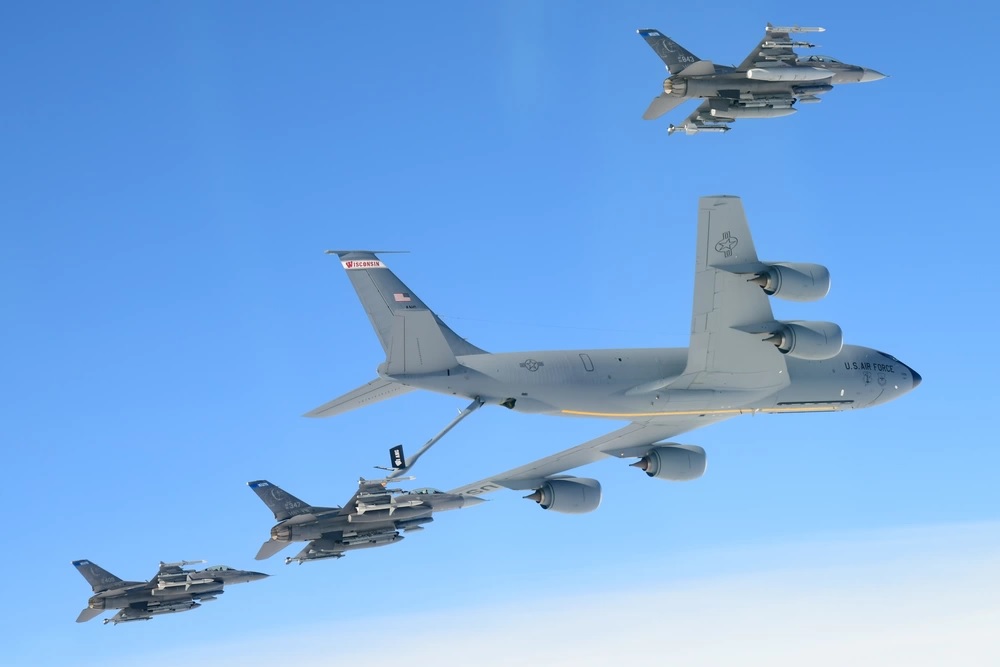 U.S Air Force Carries Out Large-Scale Middle East Deployment in Rapid 48-Hour Surge
U.S Air Force Carries Out Large-Scale Middle East Deployment in Rapid 48-Hour Surge
-
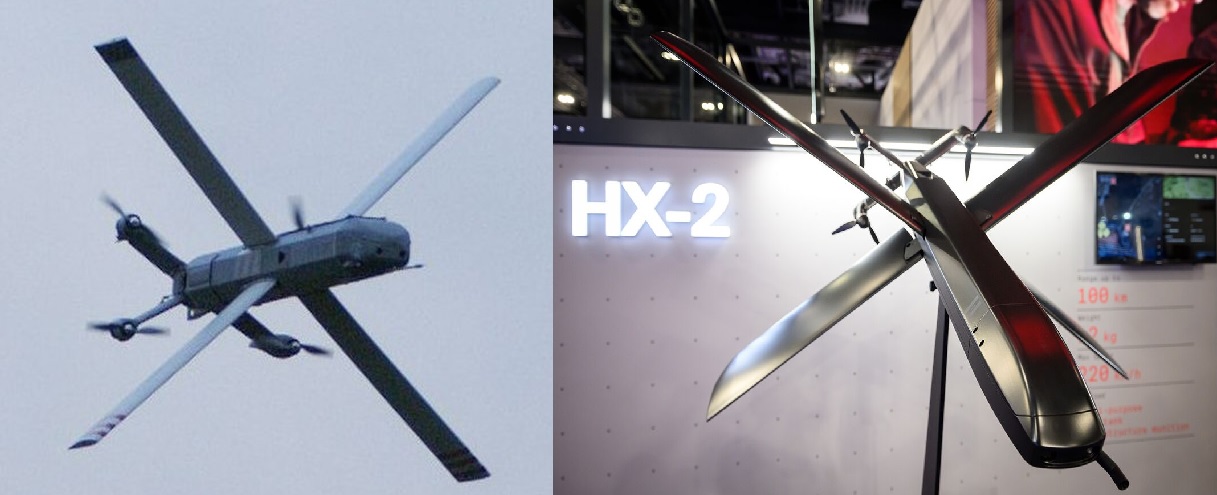 Ukraine, Germany Suspend Orders of Helsing’s HX-2 Drone After Failures in Combat Tests
Ukraine, Germany Suspend Orders of Helsing’s HX-2 Drone After Failures in Combat Tests
-
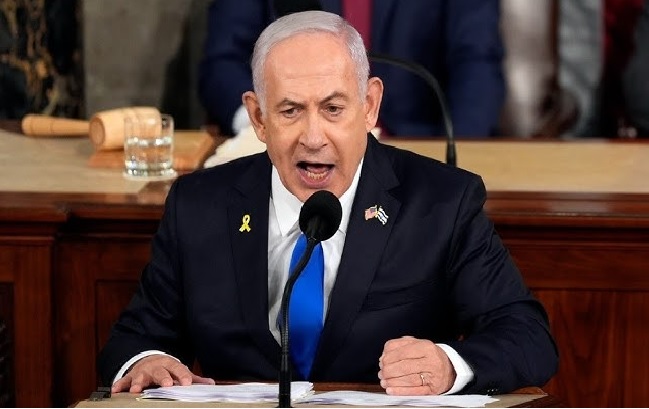 Netanyahu Warns Turkey and Qatar Over Gaza, Issues Stark Warning to Iran
Netanyahu Warns Turkey and Qatar Over Gaza, Issues Stark Warning to Iran
-
 China Warns U.S. to Stop Using ‘China Threat’ to Justify Greenland Ambitions
China Warns U.S. to Stop Using ‘China Threat’ to Justify Greenland Ambitions
-
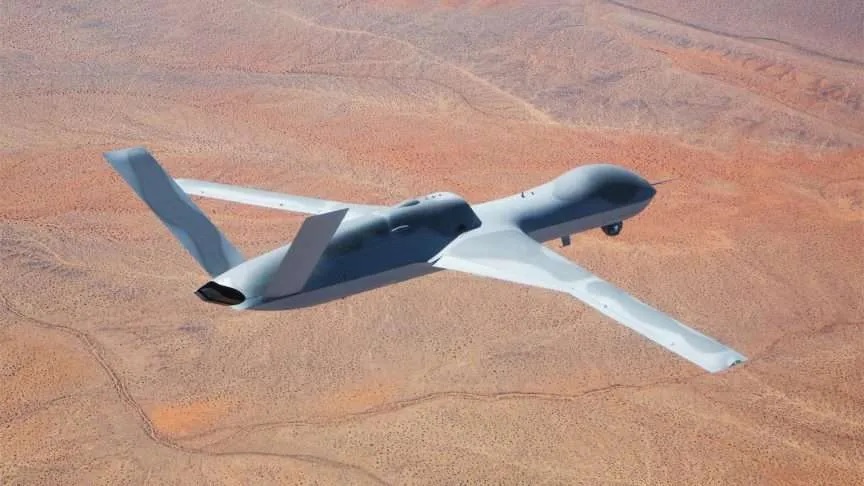 MQ-20 Avenger Completes First Live Autonomous Air-to-Air Intercept in Landmark U.S. Test
MQ-20 Avenger Completes First Live Autonomous Air-to-Air Intercept in Landmark U.S. Test
-
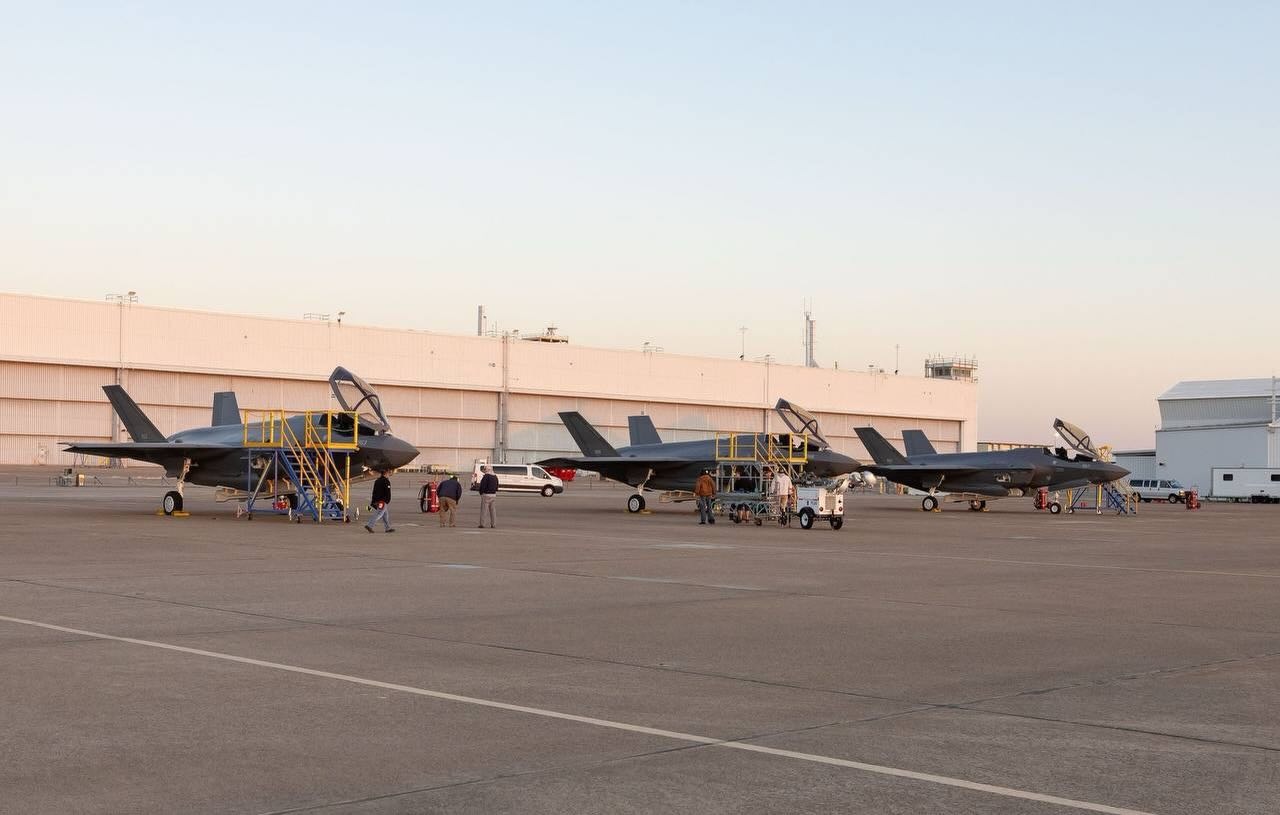 Israel Takes Delivery of Three More F-35I Stealth Jets, Expanding Adir Fleet to 46
Israel Takes Delivery of Three More F-35I Stealth Jets, Expanding Adir Fleet to 46
-
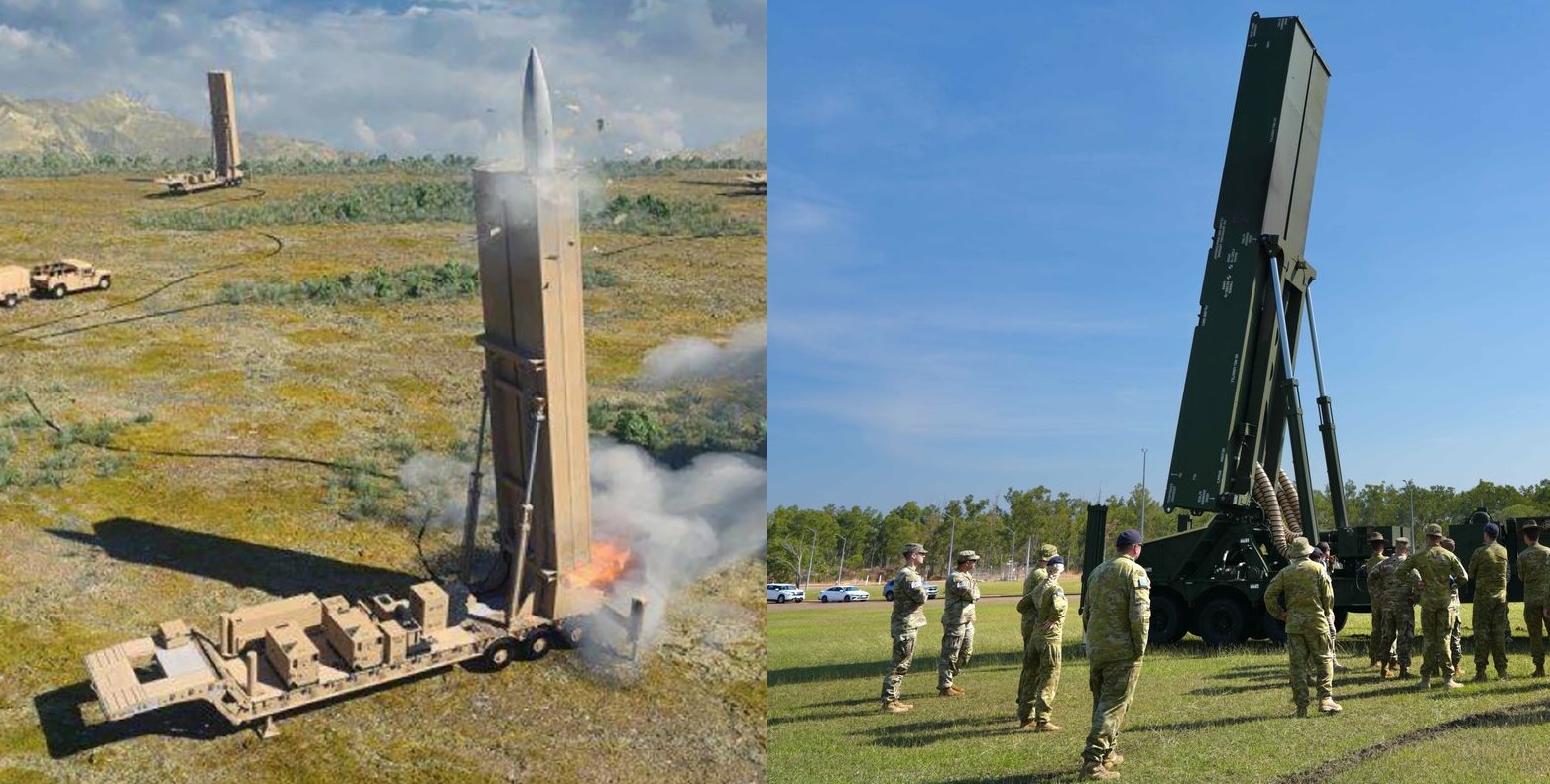 First U.S. Ground-Based Hypersonic Weapon Dark Eagle Delayed Again as Army Misses 2025 Target
First U.S. Ground-Based Hypersonic Weapon Dark Eagle Delayed Again as Army Misses 2025 Target
-
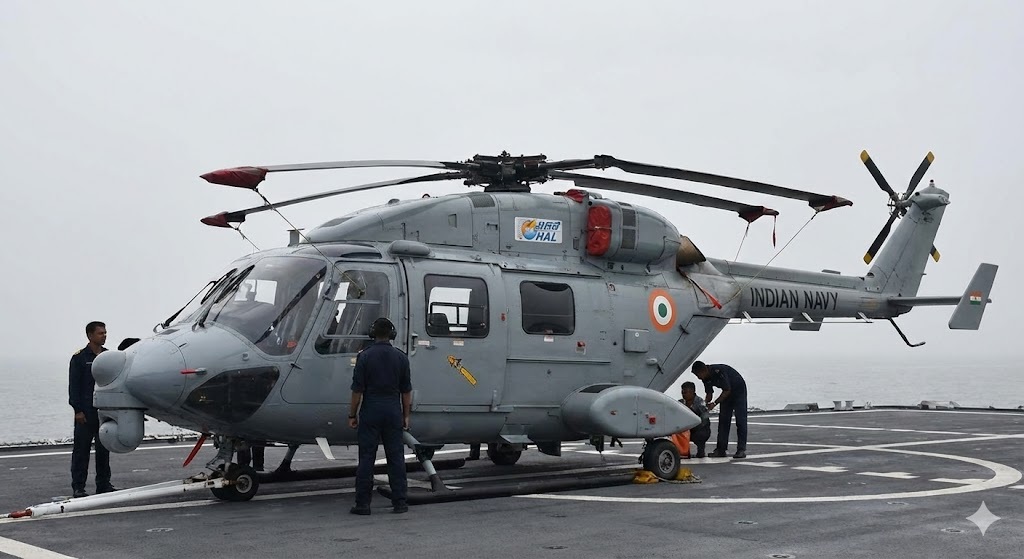 HAL Planning Flight Trials of Twin-Engine UH-M in 2026, Induction by 2030 to Replace Chetaks
HAL Planning Flight Trials of Twin-Engine UH-M in 2026, Induction by 2030 to Replace Chetaks
Top Trending in 4 Days
-
 Pentagon Places 1,500 Arctic-Trained Airborne Troops on Standby as Greenland Dispute Escalates
Pentagon Places 1,500 Arctic-Trained Airborne Troops on Standby as Greenland Dispute Escalates
-
 Over 200,000 Danish citizens Sign Petition to ‘Buy’ California From U.S After Greenland Dispute
Over 200,000 Danish citizens Sign Petition to ‘Buy’ California From U.S After Greenland Dispute
-
 China Secretly Delivers HQ-9B Air Defense Systems to Iran in Emergency Airlift Amid Strike Fears
China Secretly Delivers HQ-9B Air Defense Systems to Iran in Emergency Airlift Amid Strike Fears
-
 Iran Conducts Unprecedented High-Speed Missile Test With Rare Russia Coordination
Iran Conducts Unprecedented High-Speed Missile Test With Rare Russia Coordination
-
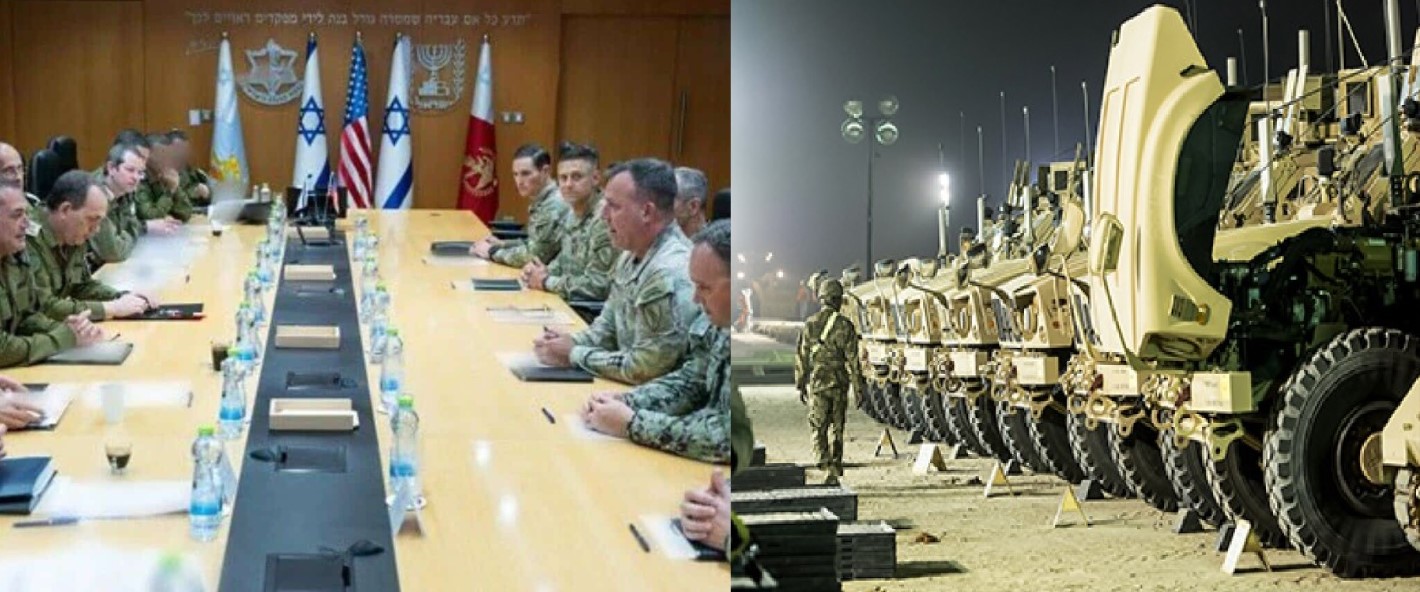 U.S. Quietly Prepares for Iran War Scenario as CENTCOM Shifts to 24/7 Readiness
U.S. Quietly Prepares for Iran War Scenario as CENTCOM Shifts to 24/7 Readiness
-
 Finland Successfully Transmits Electricity Through Air Using Sound and Laser Beams
Finland Successfully Transmits Electricity Through Air Using Sound and Laser Beams
-
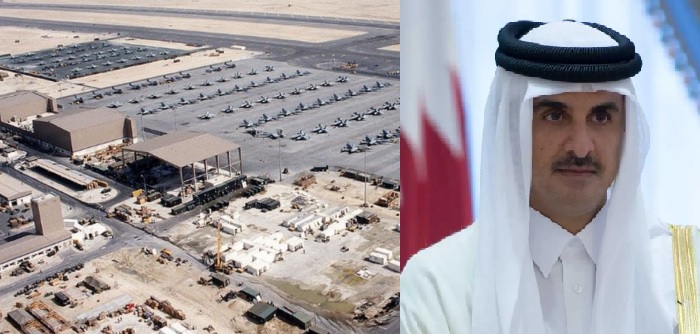 Qatar Warns U.S Over Al-Udeid Base: ‘You Are a Tenant, Not the Owner’
Qatar Warns U.S Over Al-Udeid Base: ‘You Are a Tenant, Not the Owner’
-
 Denmark Alarmed After Report Says U.S. Quietly Sought Sensitive Military-Use Data on Greenland
Denmark Alarmed After Report Says U.S. Quietly Sought Sensitive Military-Use Data on Greenland



